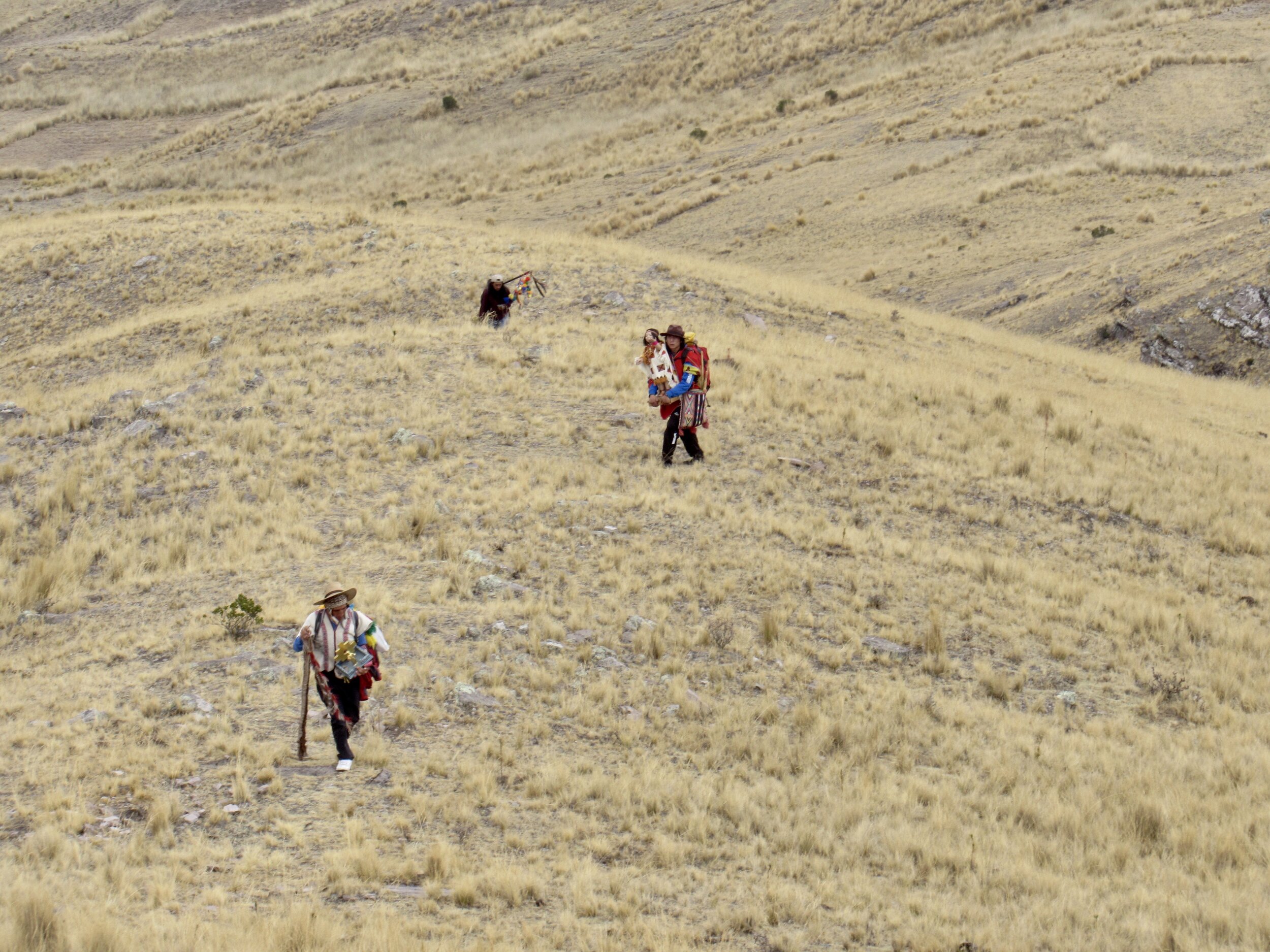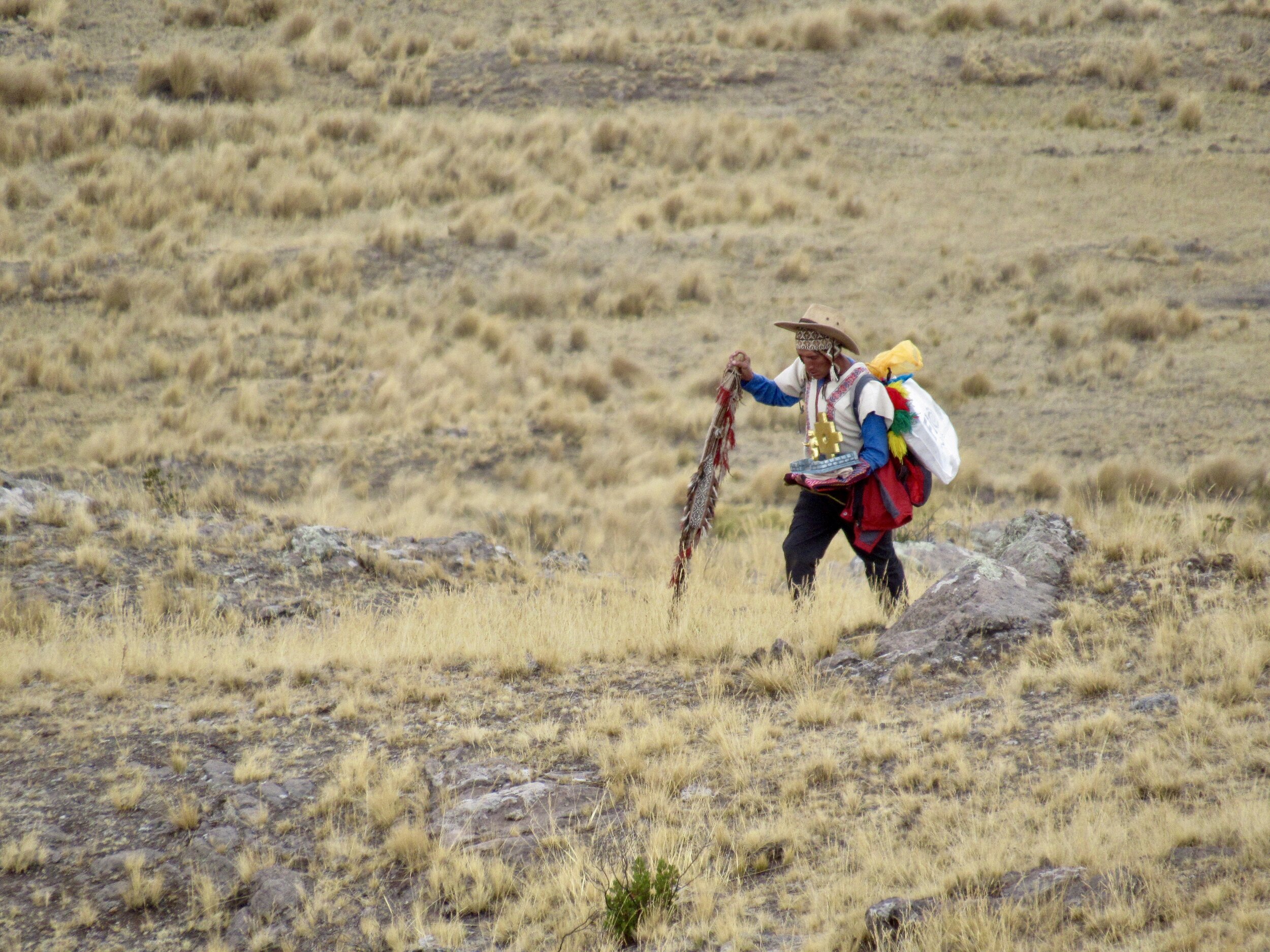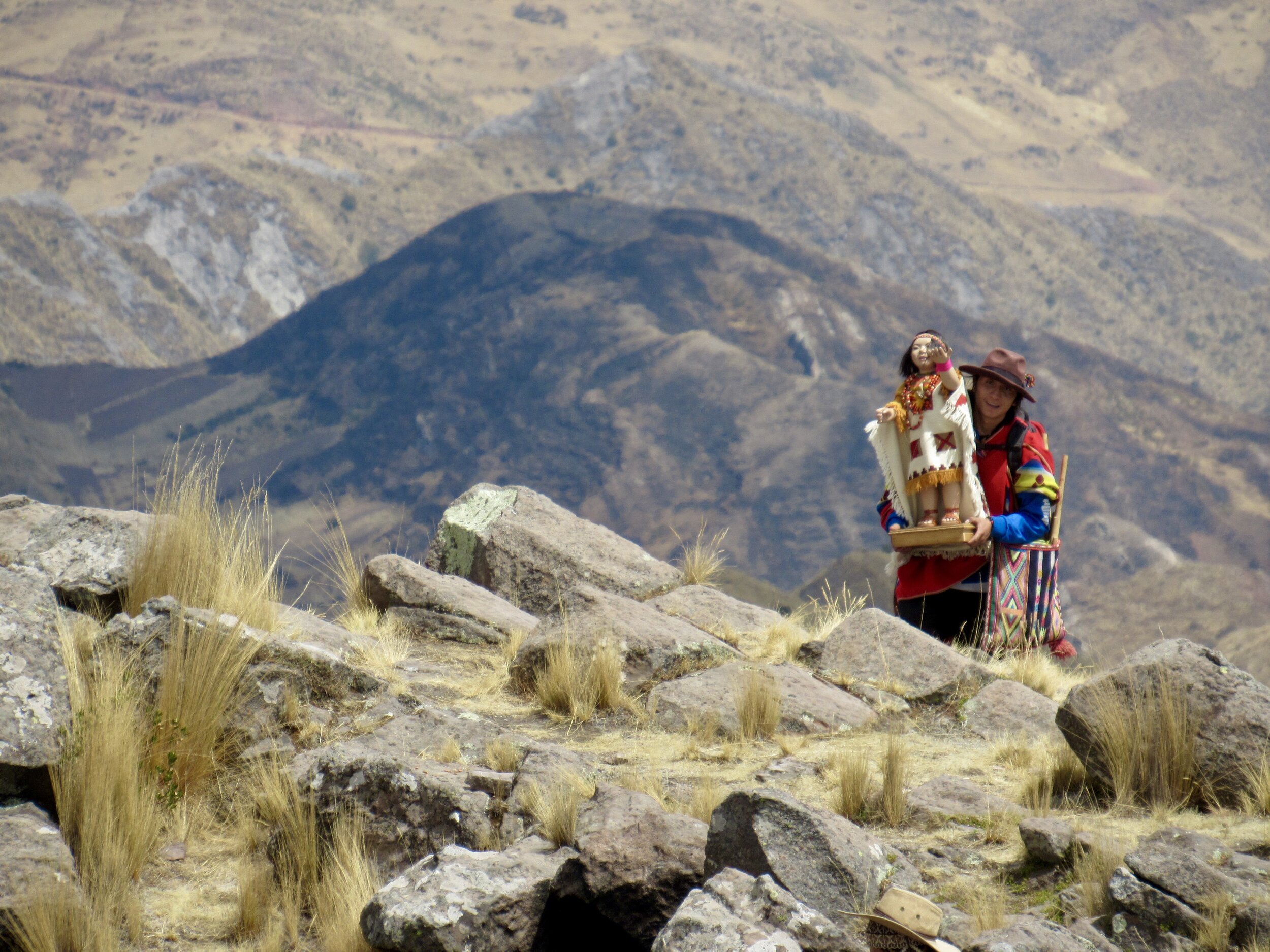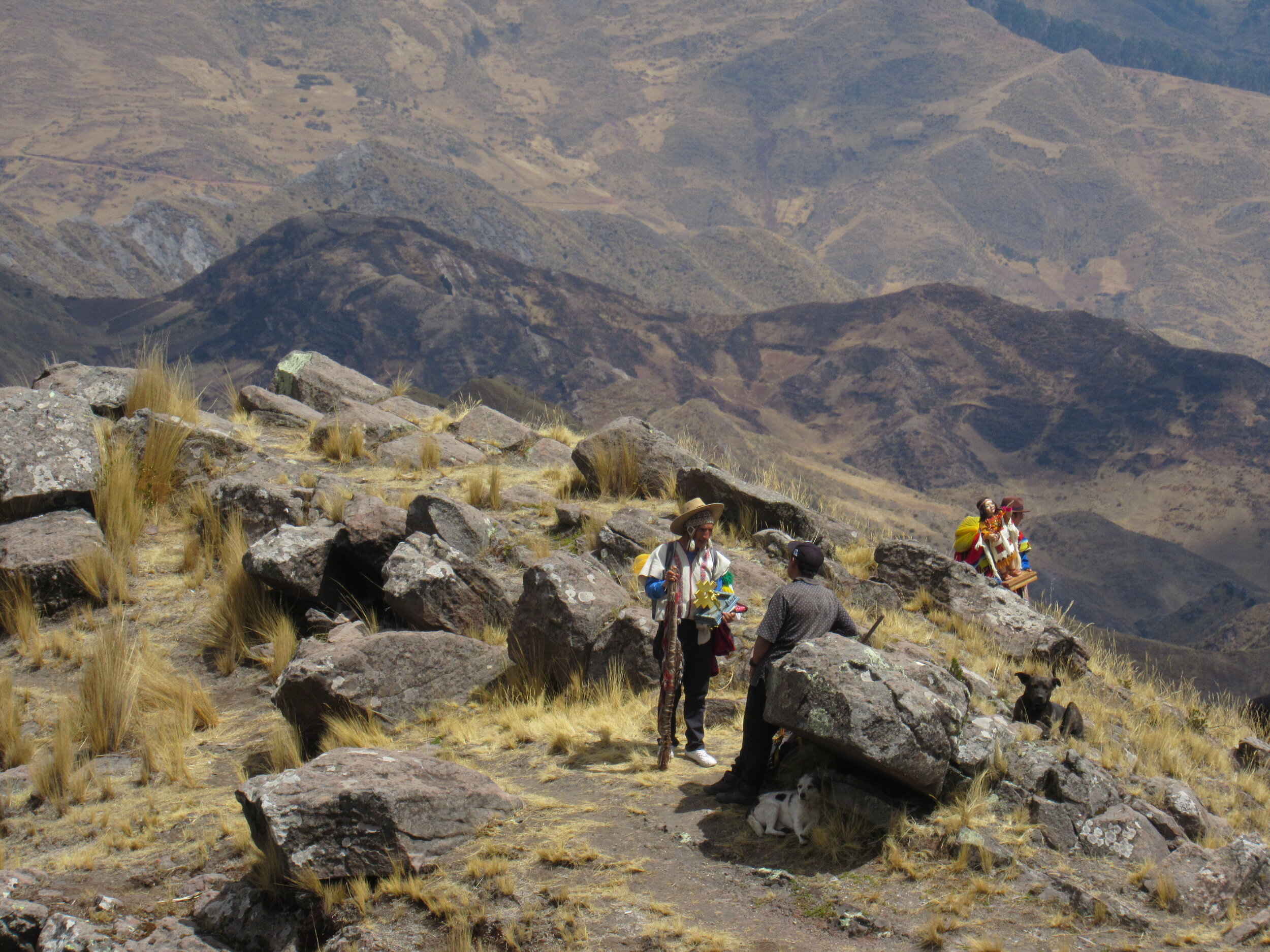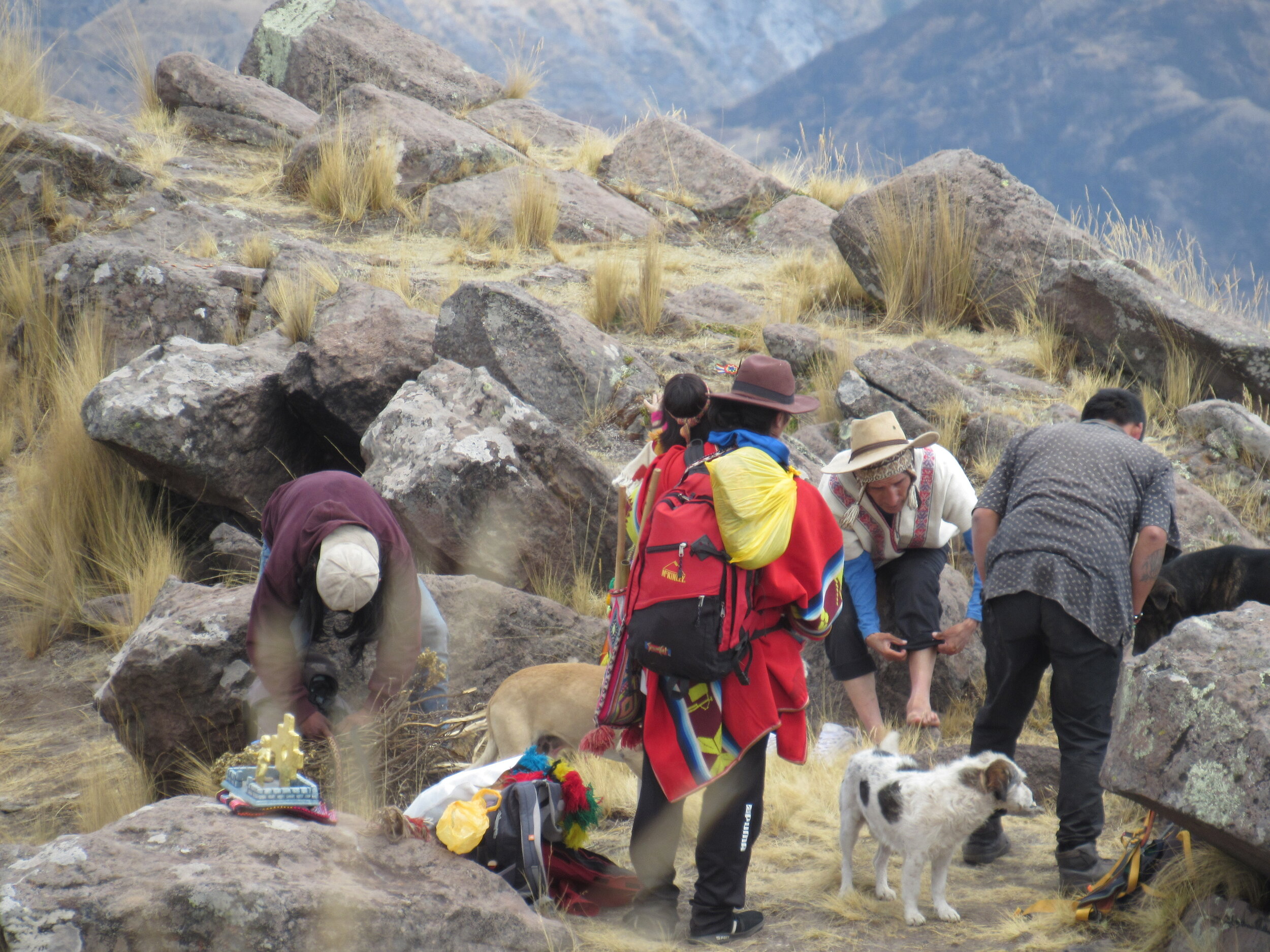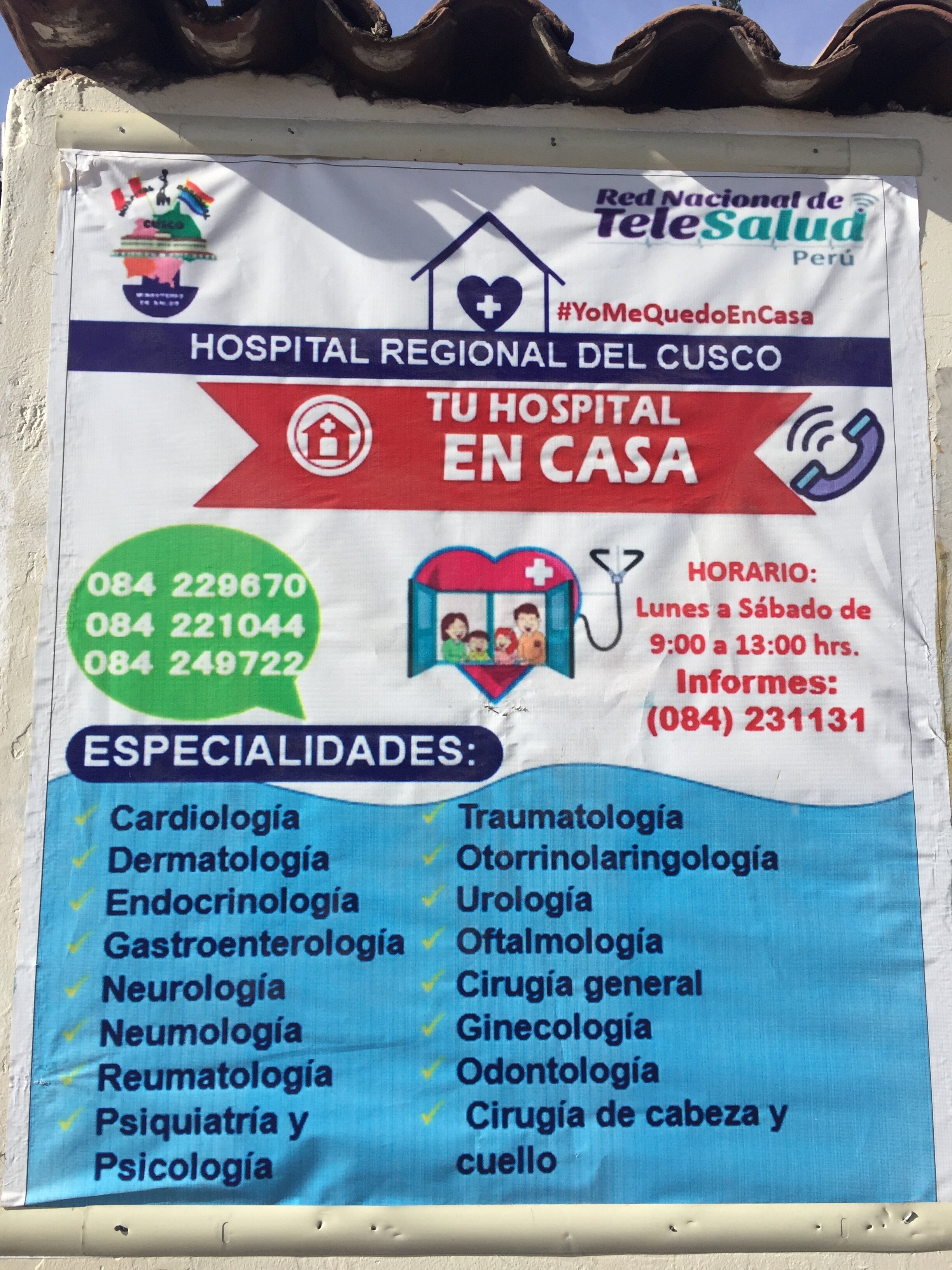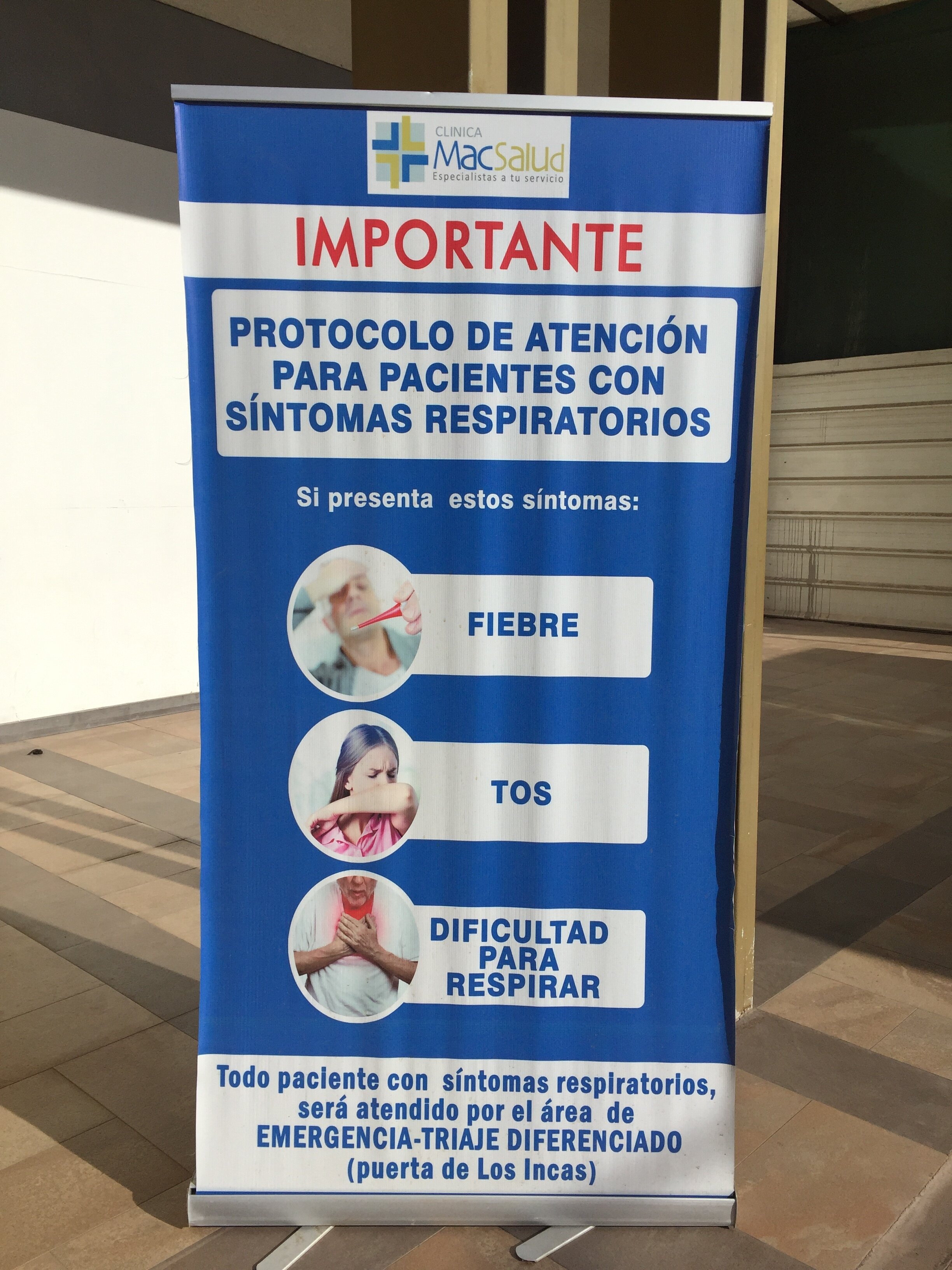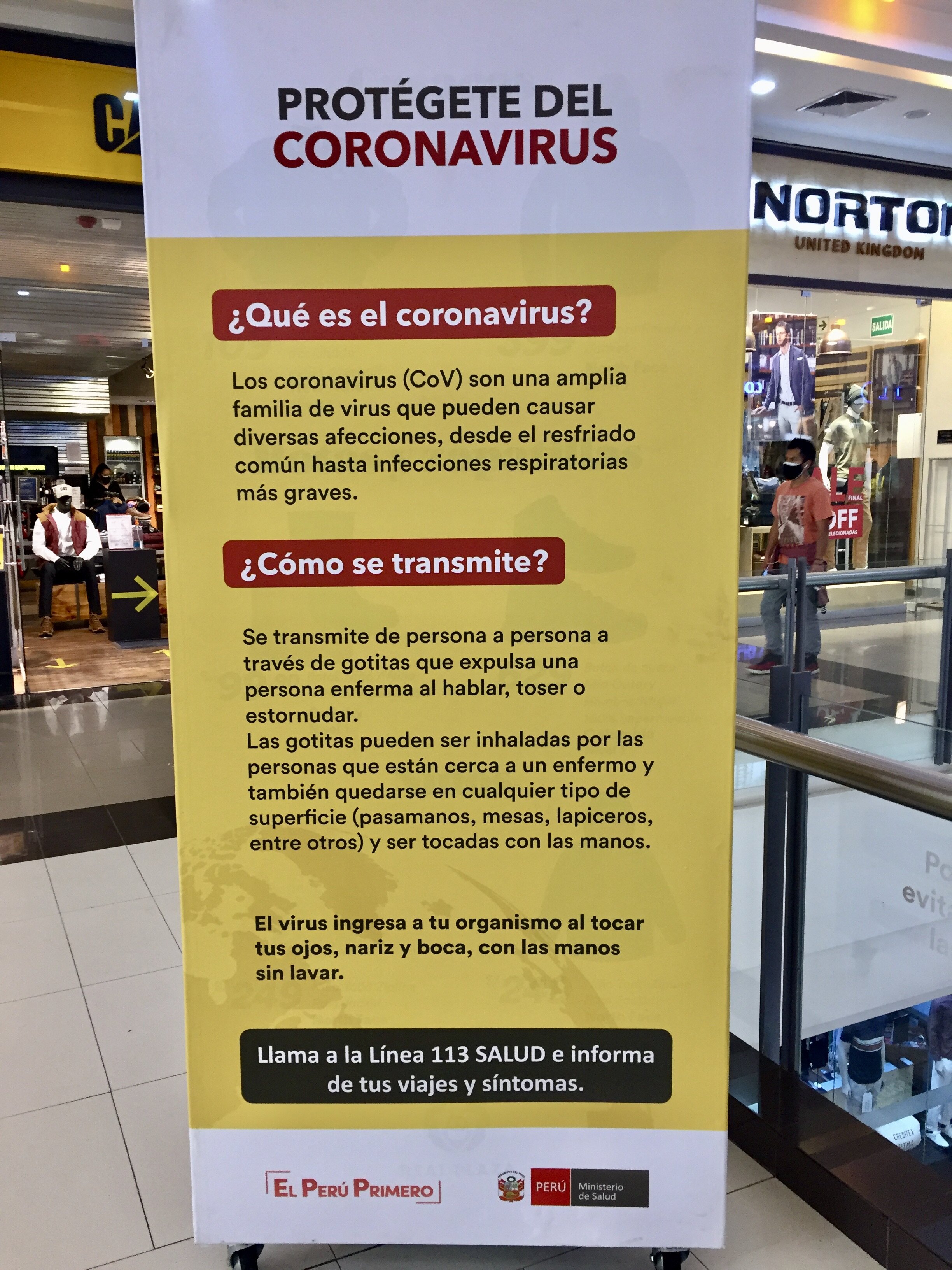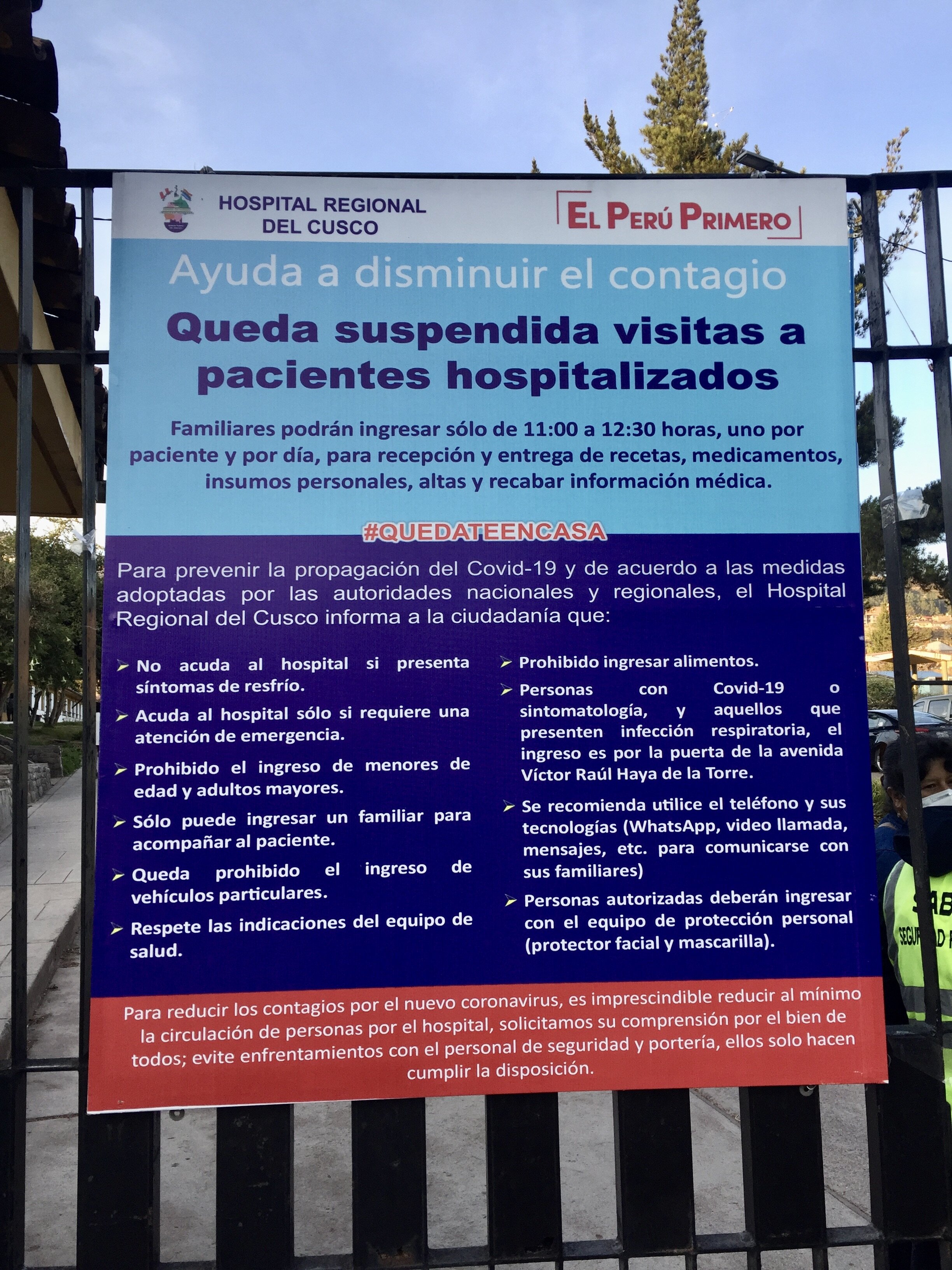Covid in Cusco: Week 30
Sunday, 4 October, 2020
205 days since Covid arrived in Cusco
30 weeks and I’m still in lockdown with an 8pm curfew? This isn’t like Europe, which is facing new lockdowns with their recent flood of new cases. Peru never lifted all of our lockdowns and curfews, even though in July the “quarantine” ended and for a couple weeks the curfew was 11pm.
Here in Cusco, our cases of Covid exploded at the beginning of July and by the end of August we had about a thousand new cases per day and about a death per hour. This was a huge shock for everybody, including myself, because throughout April, May and June we had only a handful of cases total. Most days the hospitals didn’t record any new cases and we didn’t have a single death during all of April and May. We saw Covid as being a problem in Lima, New York and other big cities.
In July the Peruvian government started allowing some travel within the country and for the first time since quarantine was declared on March 15th, people from Lima came to Cusco. Suddenly, we started getting significant numbers of new cases every day and had our first deaths since three tourists died here in March. In Cusco, everybody blamed the government and people from Lima for breaking our quarantine that had been so effective.
Along with everybody else, I was mad. We were doing great in Cusco. By June I wasn’t afraid to go outside and not afraid of catching Covid. We just had so few cases that it wasn’t an issue. I have a slightly different perspective now. Covid was going to get to Cusco eventually and at least our complete lockdown from March 15th to July bought the hospitals in Cusco time to get ready. Lima did get most of the resources during those months, because the outbreak there was severe. Still, I’m no longer so mad at the government for allowing people from Lima to come to Cusco in July. I’m just glad that the lockdown bought us over three months to get the hospitals ready for the pandemic to hit Cusco.
I woke up this morning in Urubamba, still on my weekend getaway to the Sacred Valley. Last weekend I left Urubamba before 6:30 Friday evening so that I could get back to Cusco by 7:30 and home to my apartment before the 8pm curfew. This weekend I decided to take the extra day in the valley, even though that means I’ll have to hurry back to Cusco Monday morning so I can be home and online when I’m supposed to start work at 9am. I really hope this Sunday curfew ends soon, so that I can come home from a weekend out of town on Sunday.
Over breakfast this morning, I asked Auqui’s sister-in-law, Josefina, how the school year was going for her. She teaches art history and a class that sounds like a combination of civics and life skills. She said that the kids are bored, frustrated, stressed and exhausted and that most days she feels the same. They had a couple weeks of vacation in August, but now are working straight through to mid-December, when the school year ends.
As I’ve discussed in previous blogs, all schools this year are from home per presidential decree. The national curriculum is accessible online and also broadcast on public tv and radio stations. Each teacher is still responsible for helping and assessing the students who would normally be in their class. Since families who have a computer rarely have more than one, siblings have to take turns and not everybody can be online during regular school hours. Kids end up emailing or texting questions to their teachers at all hours of the day. That puts many teachers in the position of having to choose to either work all day, every day, or leave kids hanging. It’s not a good situation for anybody.
I’m also curious in general about teaching in Peru. Josefina told me that teachers can get assigned to teach just about anything. Though she studied and specialized in art, she has been asked to also teach everything from math to her current civics/ life skills class. That seems completely unreasonable to me. How can you expect teachers to do a good job teaching something that they never studied to teach? Why would you do such a disservice to your students? Josefina said that teachers can teach themselves as they go along and most teachers will rise to the challenge. True, but still, I can’t see that being a good situation for teachers or students.
Since I taught French for twelve years, I had to ask if French is an option at any schools in the Sacred Valley. Unfortunately, she said that it is not. She also told me that English has recently become a required class. It used to be optional, but just a few years ago the requirements changed. What is now an option is Quechua! This is the native language of the Cusco region, which is quickly dying out. Pretty much everybody’s grandparents speak Quechua, the parents understand but often don’t really speak Quechua and their children can’t understand their own grandparents.
It’s tragic, but very common. This is the case for many people I know, including Angela and Fred, my students in Lima. Neither of them can understand more than a few words of what their grandparents say and their nine year old daughter doesn’t know a single work of Quechua. Strangely, her school is trying to teach her English, French and German. She has English four hours per week, but French and German just one hour a week each. Who thought that one up?
Monday, 5 October, 2020
This morning I actually got home at 9:02 and had the computer up and the work email open by 9:05. Not bad for waking up in the Sacred Valley, taking a van from Urubamba to Cusco, then a taxi across town to get back to my apartment.
I’m really not worried about being a bit late to work considering that my September salary is six days late at this point. I am normally paid the last day of the month, which was last Wednesday. My boss apologized that he would be a day late and asked me to wait till October 1st to go to the bank for my salary. Friday, October 2nd I didn’t have time to go to the bank, but on Saturday I tried to get money from the ATM and realized that my account was still empty.
This was my first paycheck since the end of June and when I contacted my boss Saturday evening, he blamed the accountant and said that he would make sure that she deposits my salary Monday morning. Getting paid late is mildly annoying but what really bothers me is having to practically beg for my salary. This really doesn’t help my motivation for working online at home, as the only employee of the trekking agency.
Halfheartedly working this morning, I scrolled through the news a bit. This article about how Cuba is suffering from a strict lockdown and the end of tourism reminds me a lot about the situation here in Peru. The article laments that “for more than six months Cuba has maintained one of the tightest lockdowns anywhere in the world to prevent the spread of the coronavirus. All commercial air and maritime travel has been suspended since April 2, and anyone entering or leaving Cuba needs special government permission to do so.” This is still the case in Peru, though our lockdown started two weeks earlier, on March 15th.
There are still no commercial flights available in or out of Peru, though this week there are supposed to be some limited commercial flights to Brazil, Chile, Colombia and Ecuador. In theory, people leaving Peru might be able to find a connecting flight to the US from one of these countries. If so, that will be the only option for getting back to the US besides the emergency evacuation flights that run to Miami once a week or so.
The article quotes somebody who used to work in tourism in Havana, words that I have heard from so many in Cusco who used to work in tourism: "There's no one," he gestured at the empty colonial streets of Old Havana. "There's no tourists, no income. We didn't think it would last this long."
No tourists, no tourism
The Cusco airport is just now opening, after being closed for more than six months. The only flights allowed are from Lima and borders are still closed, so there are still not tourists here. As long as there are no tourists, all archeological sites, historical sites and museums remain closed.
Tuesday, 6 October, 2020
I’m still waiting for my electronic absentee ballot to arrive and starting to get worried. I know somebody here in Cusco from Delaware who already voted and also somebody here from Florida who already voted. Last November I got my Washington State ballot on October 5th and voted that same day. This year, I need to know that my vote was counted, and soon. I thought that each of the last several presidential elections were the most important election ever, but this one is above and beyond way more important.
It wouldn’t have to be so important if Hillary Clinton had been president these past four years. Considering that she won by over a million votes, and that all that took the presidency away was the electoral college system that was designed to favor southern states, I still think that she should have won the election. I’m still not over that election. We have never before had a candidate who had been a senator for 10 years, lived in the White House for 8 years then been Secretary of State! Her major issue as a senator was health care and that’s what she promoted the most as First Lady.
What would the US be like, if for the past four years, our president had been one who had spent much of this time improving the healthcare system? We certainly wouldn't be leading the world in Covid deaths. The US has one of the highest death rates of any country in the world, despite having all of the resources available that should have kept us on par with Canada and Europe. I don’t think I’ll ever get over that election.
All of that boils down to wanting my vote for Joe Biden and Kamala Harris counted as soon as possible. Last November, I got my ballot by email, printed it, filled it out, signed it, scanned it and sent it back to Washington State all in one day. Now, I’m constantly checking my email and spam folder and waiting for my ballot to arrive.
Wednesday, 7 October, 2020
Listening to the radio this morning, I heard the news that the Peruvian government is going to increase the budget for 2021 for frontline workers, who were defined as medical workers, police, armed forces and teachers. It’s amazing to hear teachers put on such a high pedestal and I was happy to hear it, but it’s also sad that it took a global pandemic for teachers to be valued as much as the other professions named. This year, all teachers and students are home and all schools are closed for all of 2020. Next year, they will open in March and then teachers will very much be frontline workers.
This afternoon I got my first delivery of ceramic pots for my new business venture: Super Cute Plants! Auqui’s friend’s father makes ceramics, so I actually got them delivered to my place by the person who makes them. I asked for an assortment of colors and got bright red, dark blue, brown, teal, forest green, black, white, pink and some that are multi-colored. They are super cute, so as long as they sell, I might be ordering more from the guy.
Even if they don’t sell, I’m enjoying having about 20 little plants in my windows. Each one is different except for only two, which I have a double for. It’s fun to have all the different shapes and textures to enjoy and they’ll be even more colorful once I get them repotted.
Thursday, 8 October, 2020
Today I checked in with my parents, who got back yesterday from an overnight trip to Stanley, Idaho. It is still very much wildfire season in the western US and unfortunately there was recently a fire very close to Stanley. My parents have a favorite meadow that they like to camp by, where they can watch sandhill cranes and often also antelope and elk. From the maps of the fire, Mom said they couldn't quite tell if their meadow had burned or not. Unfortunately, they came back with bad news. Only half of the grassy meadow burned, but all of the trees near where they camp crowned out and there is little left but charred sticks.
I tried to follow up on the fire at Machu Picchu, but there haven’t been any new articles since September 13 and 14 when they were claiming to have the fire under control. I want to know how close the fire was to the archeological site, and how bad the burn was. As I outlined in blog 27, it is almost impossible to get to Machu Picchu with the current pandemic lockdown, and therefore almost impossible to get any information that’s not officially released by the government. I suspect that they will want to downplay any potential damage.
Unfortunately, tonight the news was full of the hills above Cusco burning. The Temple of the Moon, my closest hike to home, didn’t burn, but plenty of other areas did, including the archeological area of Tambomachay.
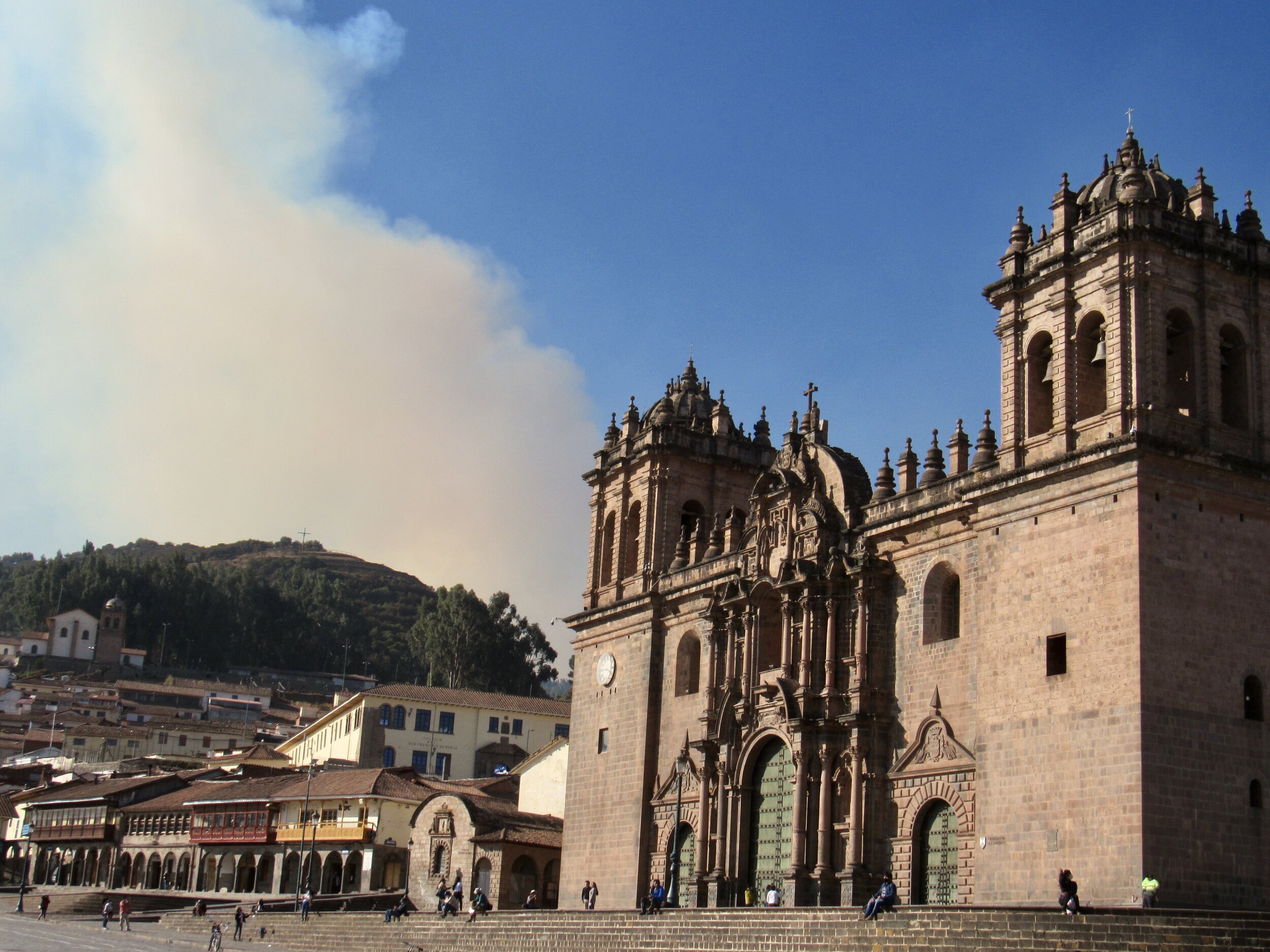
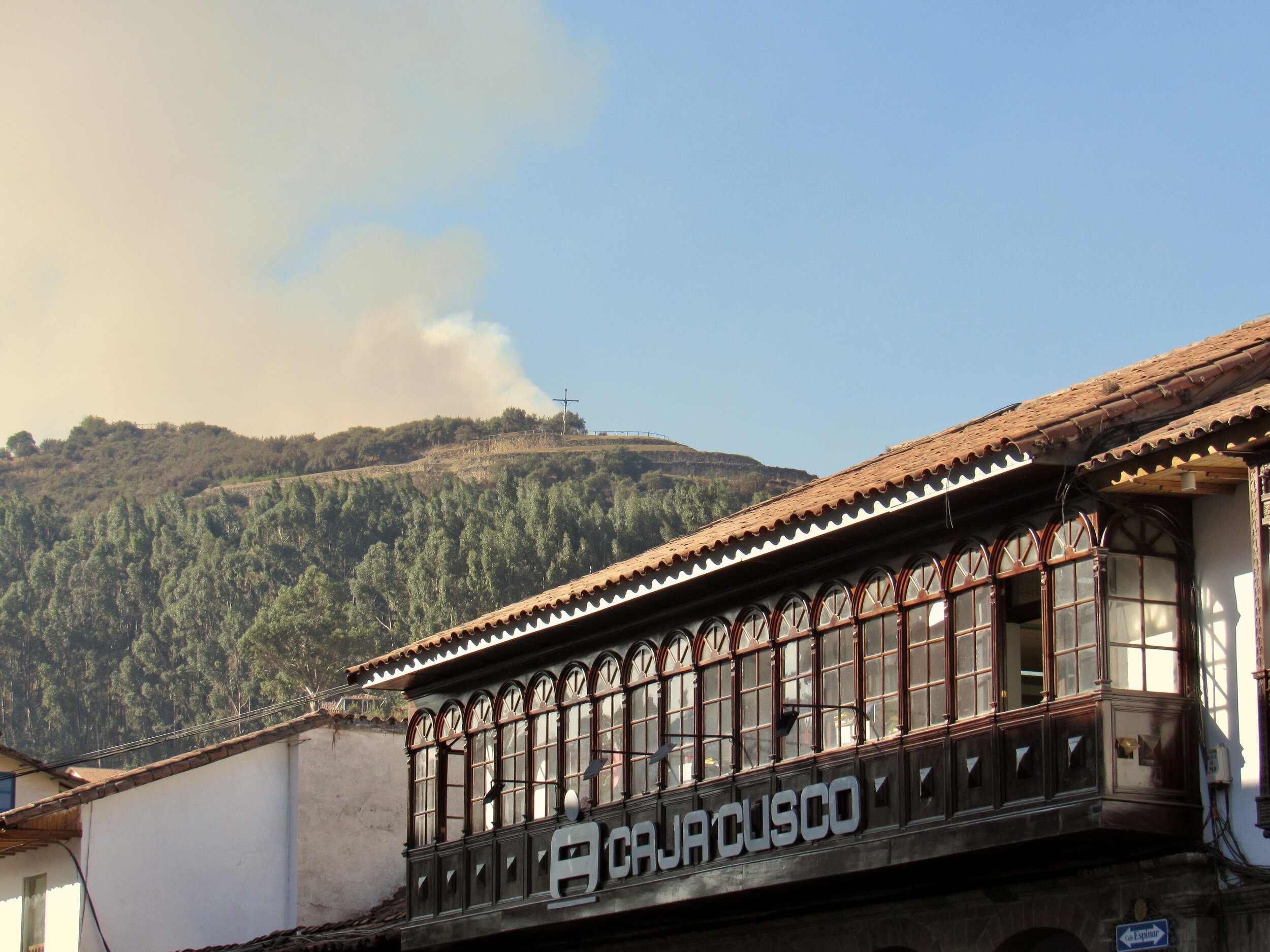
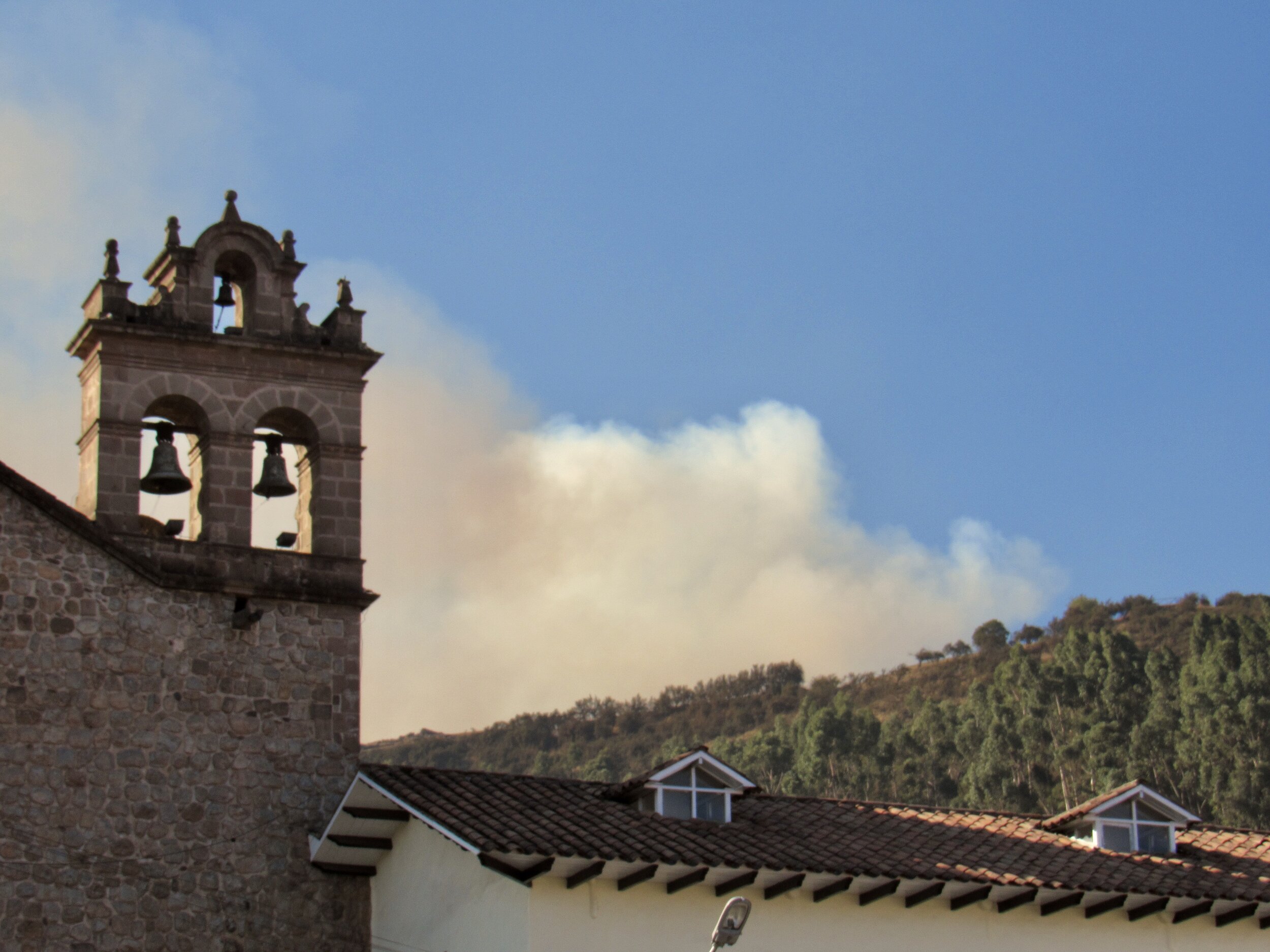
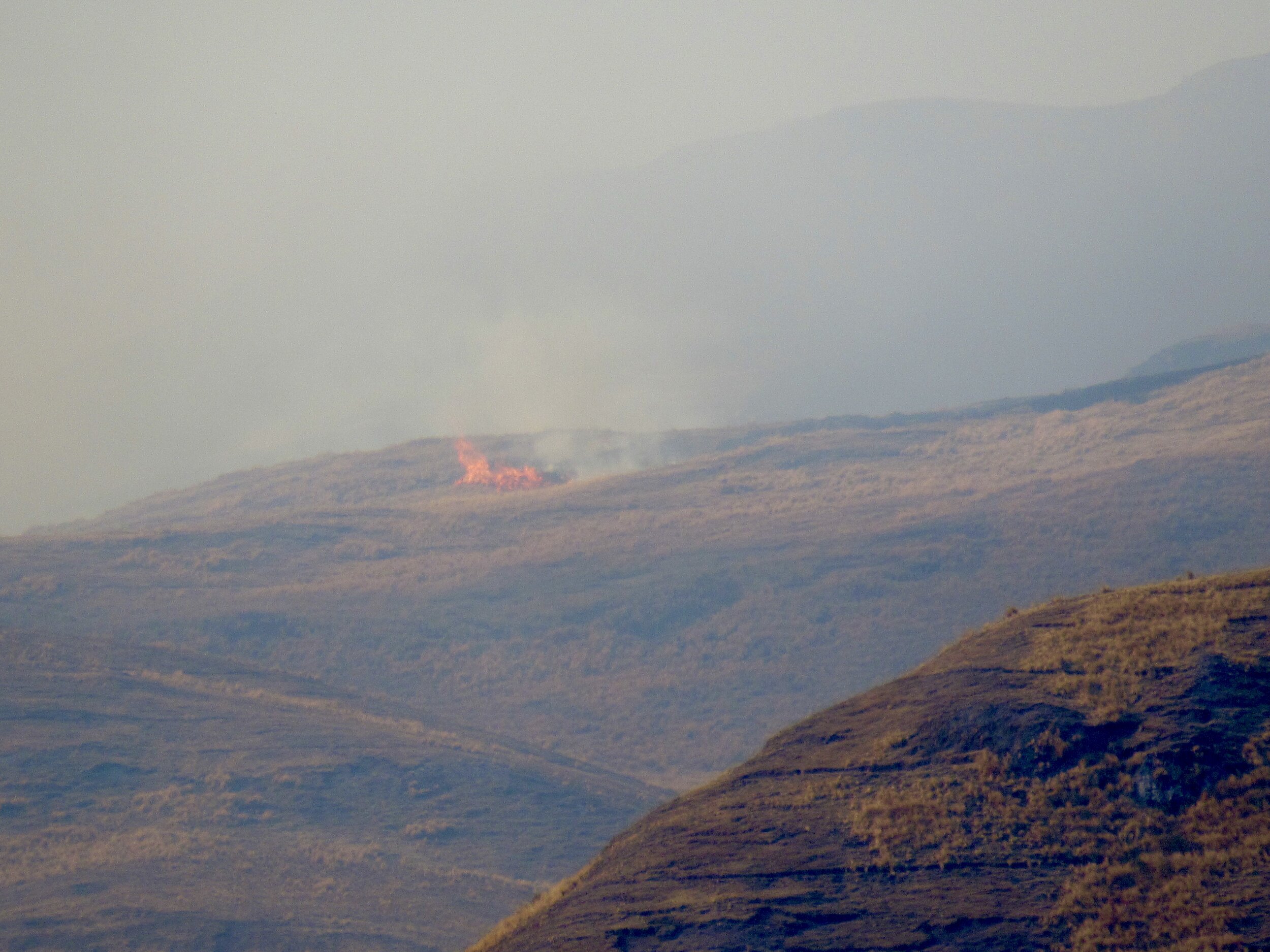
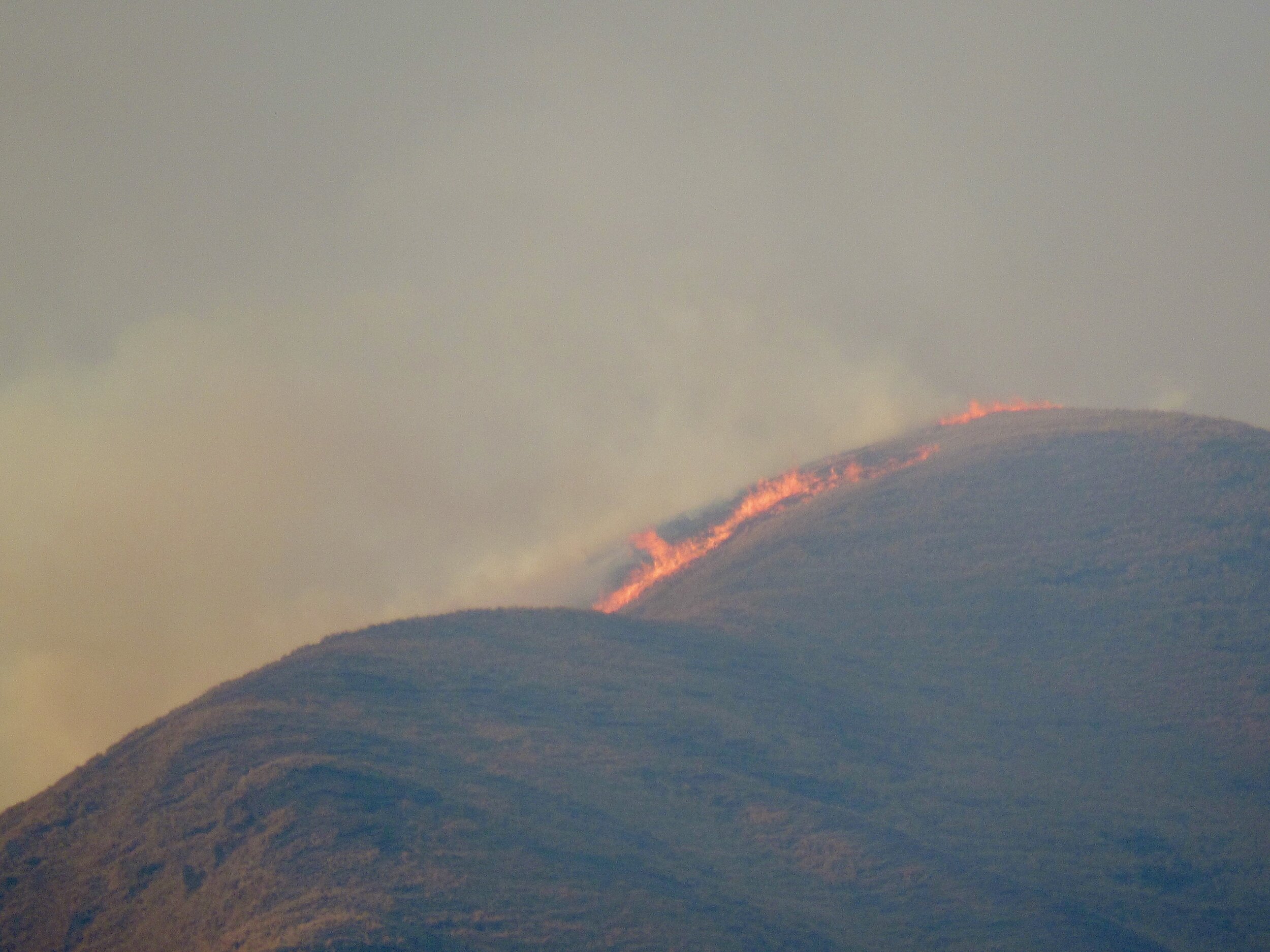

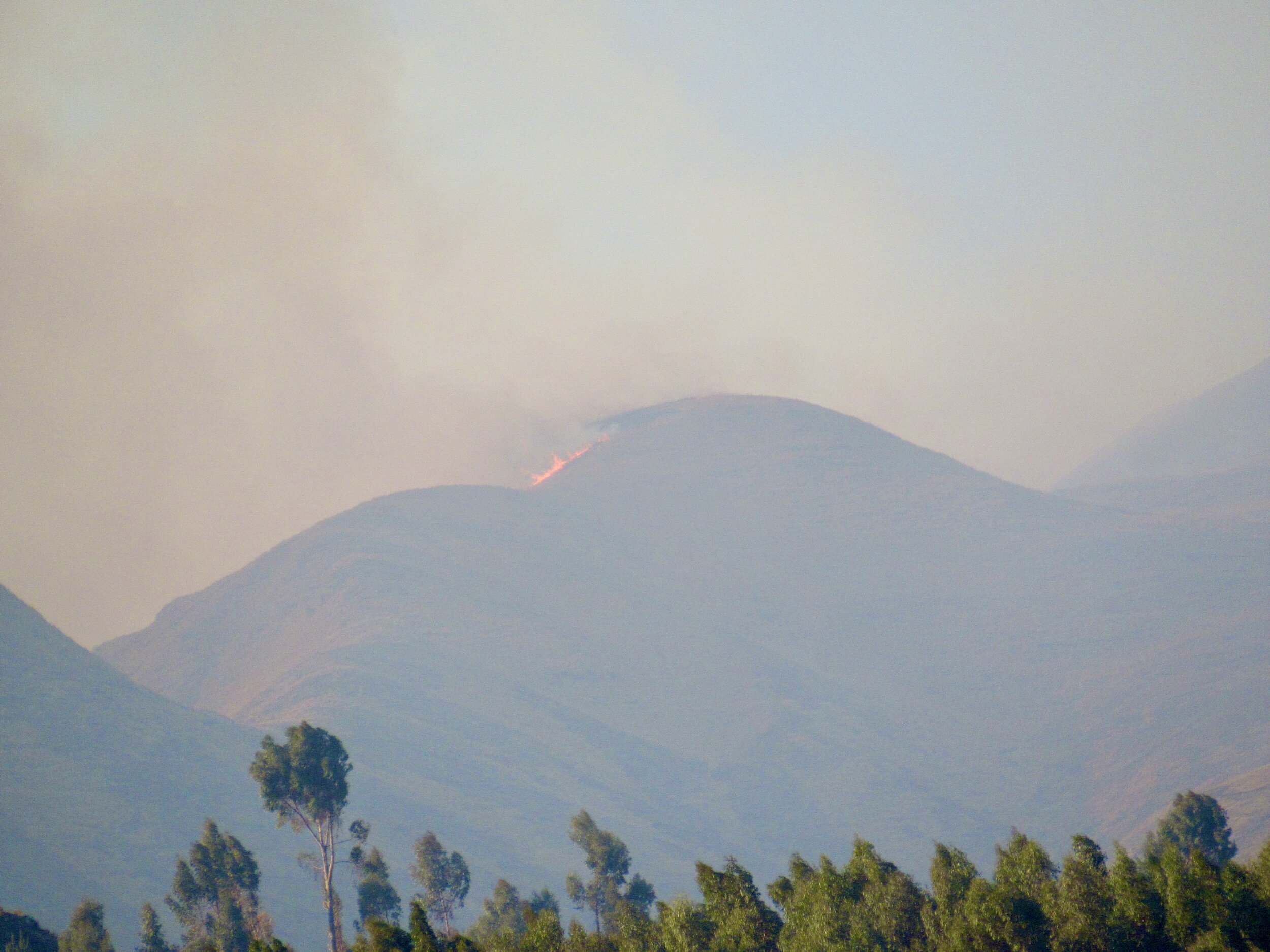
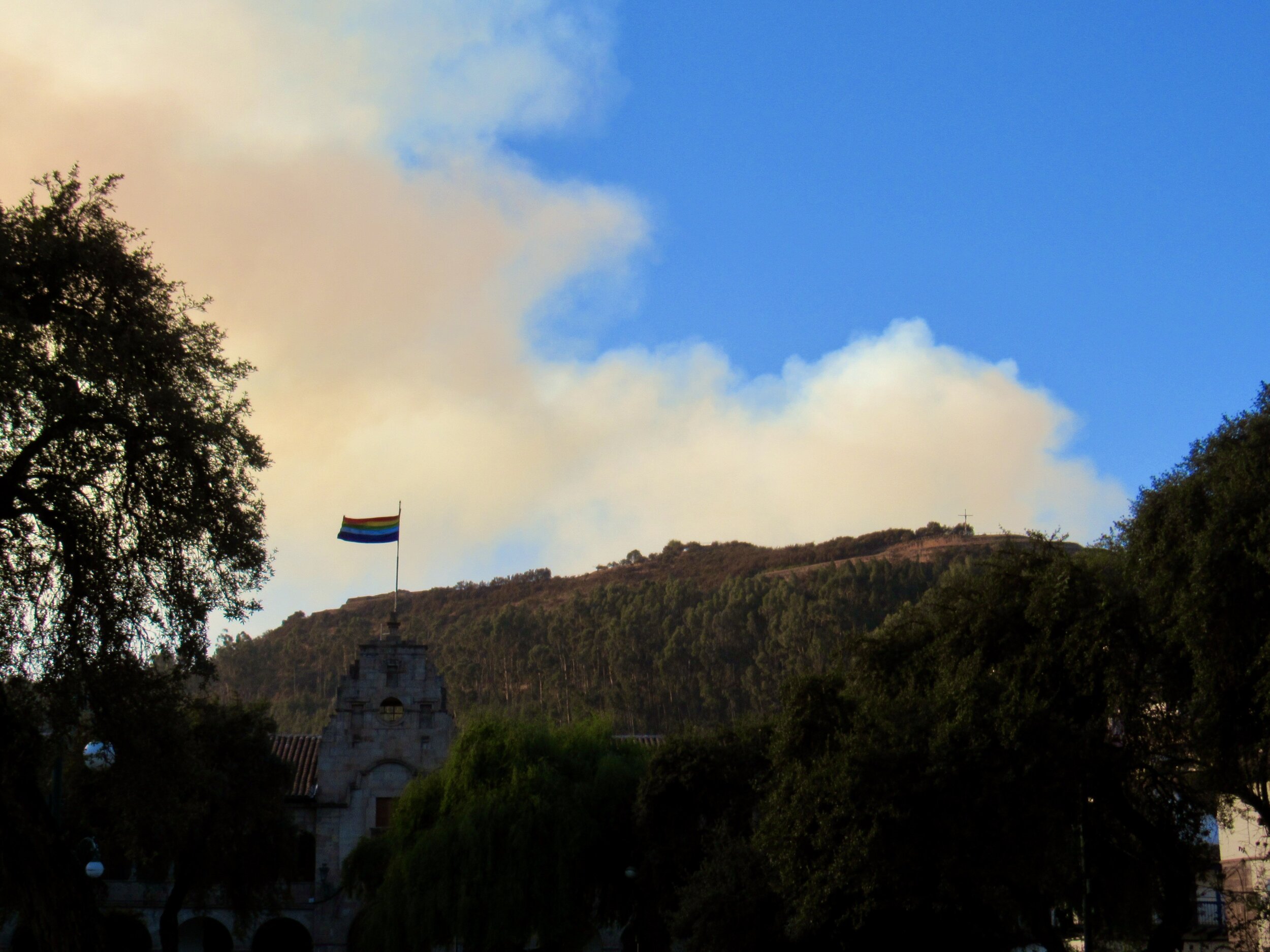
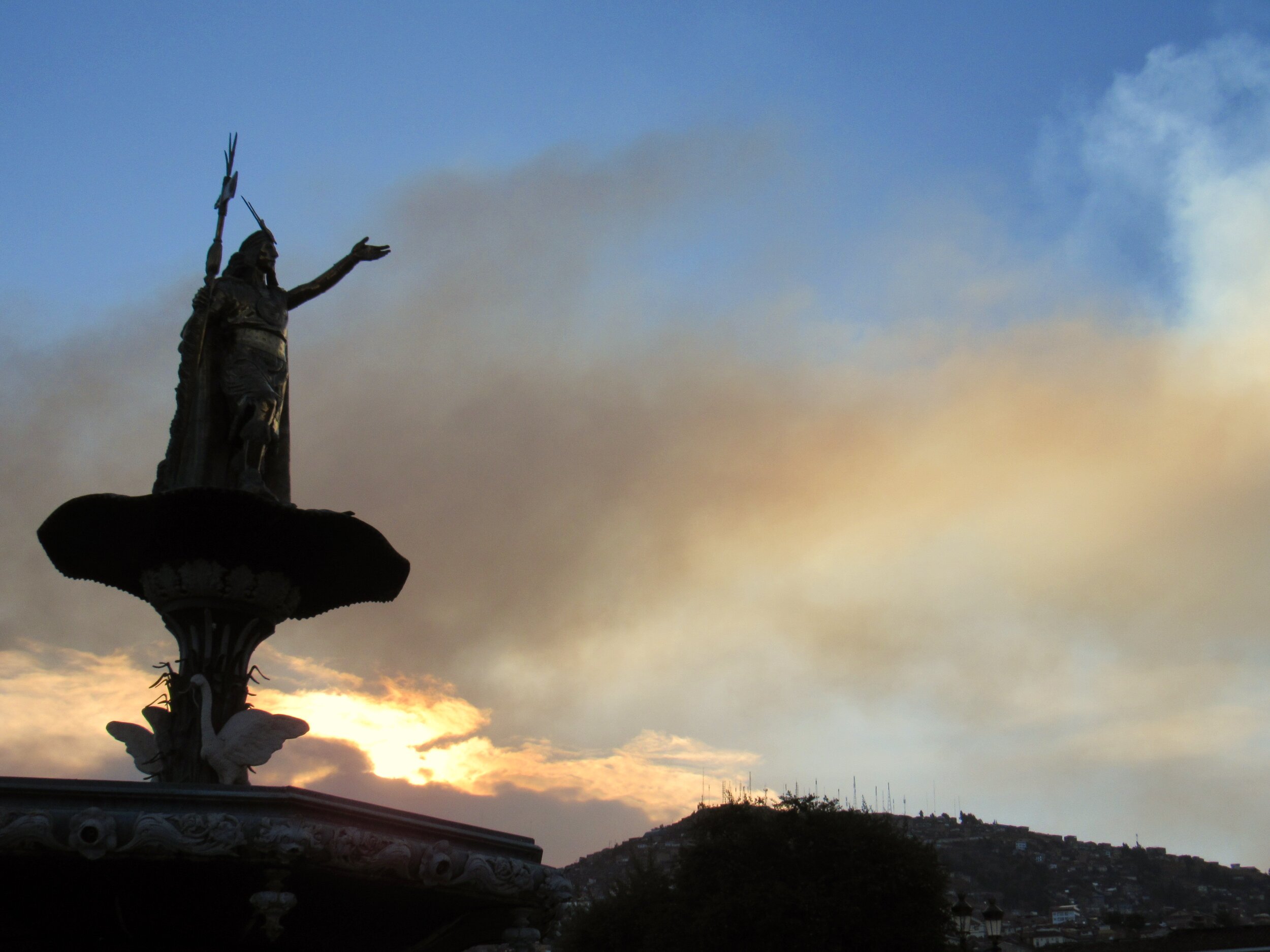
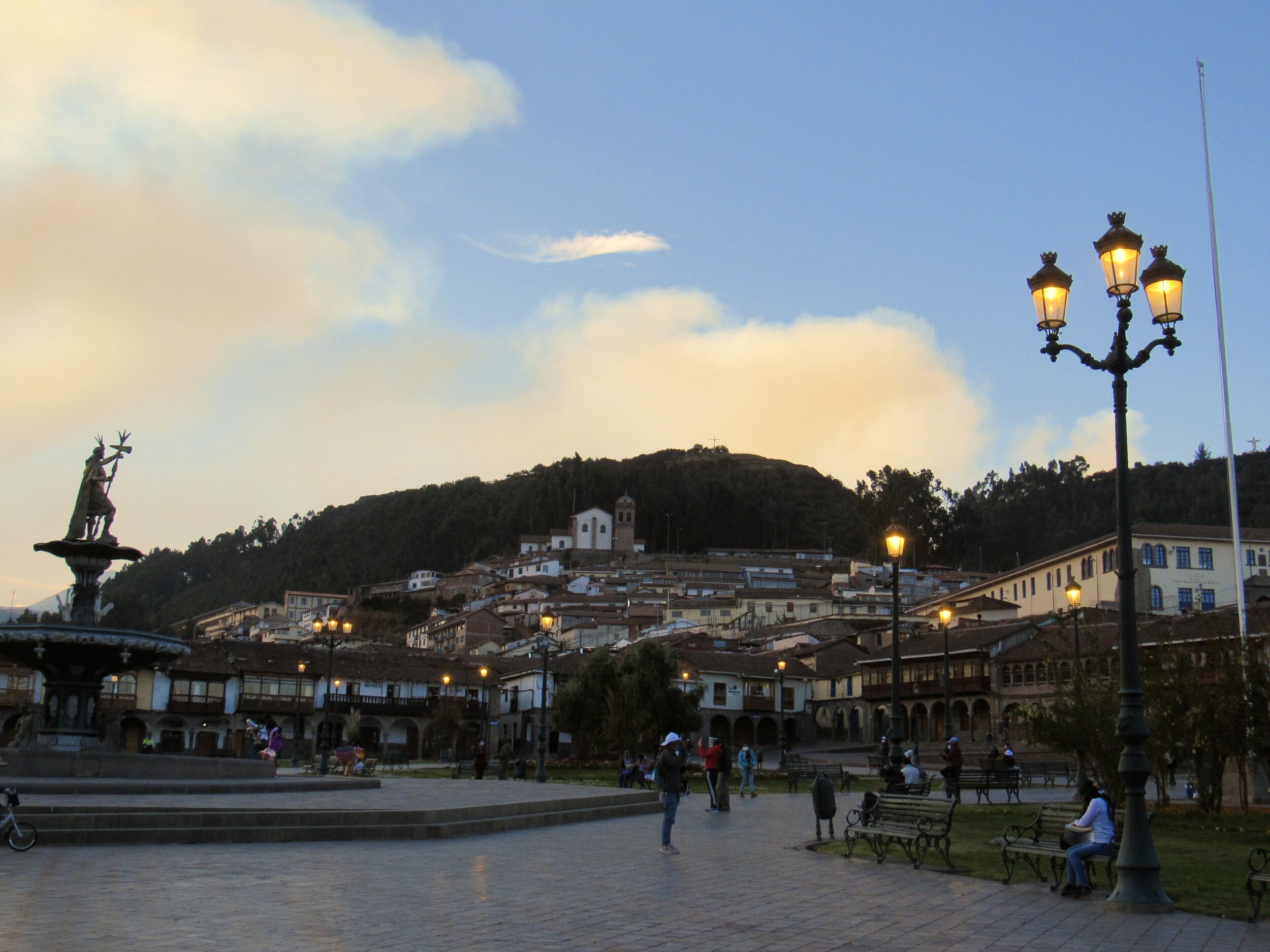
Friday, 9 October, 2020
This afternoon I went to take pictures of what I thought would be hills blackened from last night’s fire. Unfortunately, what I found was an active fire. As soon as I left the house, I realized that the sky was still filled with smoke. Cusco is in a narrow valley, so I walked up through the neighborhood opposite the side of town that was on fire. Curious to see how much had burned last night, I was instead confronted with how much was still burning. It was very disheartening.
Tonight during my zoom class with Angela and Fred, we got on the topic of nuclear reactors, probably because Fred works with the development of radioactive medicines for both cancer detection and cancer treatment. I was surprised to learn that there is a nuclear reactor just north of Lima. I had no idea there was a reactor in Peru and Fred didn’t know a whole lot about it, so I had to do a little research to satisfy my curiosity.
In an article published in El Comercio, I learned that the reactor was actually first opened in 1989. It’s in a place called Huarangal, 42 kilometers/ 26 miles north of Lima. The reactor has a name, which I didn’t know was a thing at all. In France they’re named after the location (Chinon, Bugey) or have some sort of code name (G3, CL4) although one is named Phénix and another is Superphénix. In Peru, they actually named it after a person: Óscar Miró Quesada de la Guerra, a journalist.
Óscar, the reactor, doesn’t produce electricity, but is used to produce medicine. It has laboratories to produce radioisotopes. The lab techs mostly work at night and early in the morning because so many medicines have a very short half-life and some are only good for a few hours after production. They have to get to the hospitals and doctors who ordered them in the morning to be administered immediately to the patients that day.
This is probably where Fred gets the raw materials that he uses to make radiation treatments for cancer patients. Óscar produces three radioactive medicines: tecnecio, dolosam and sodium ioduro. (Apologies if my translations from Spanish to English aren’t medically precise). The article estimates that 35 million patients receive medicine from this reactor. The verb “receive” is in the present tense, and it does not specify if that is per year, at the moment of publication or overall since Óscar started making these medicines.
I think this is really cool. When Fred first mentioned a nuclear reactor in Peru my first reaction was negative: What do they need a reactor for? They better not be making weapons. If they are making electricity, what are they doing with the waste? Is the environmental benefit of not burning fossil fuel worth having to store nuclear waste? Now, knowing that the reactor is for cancer patients, I have a very different reaction. It’s awesome that Peru not only has this technology for its own citizens, it sounds like Peru also exports oncology medicine to other countries. How cool is that?
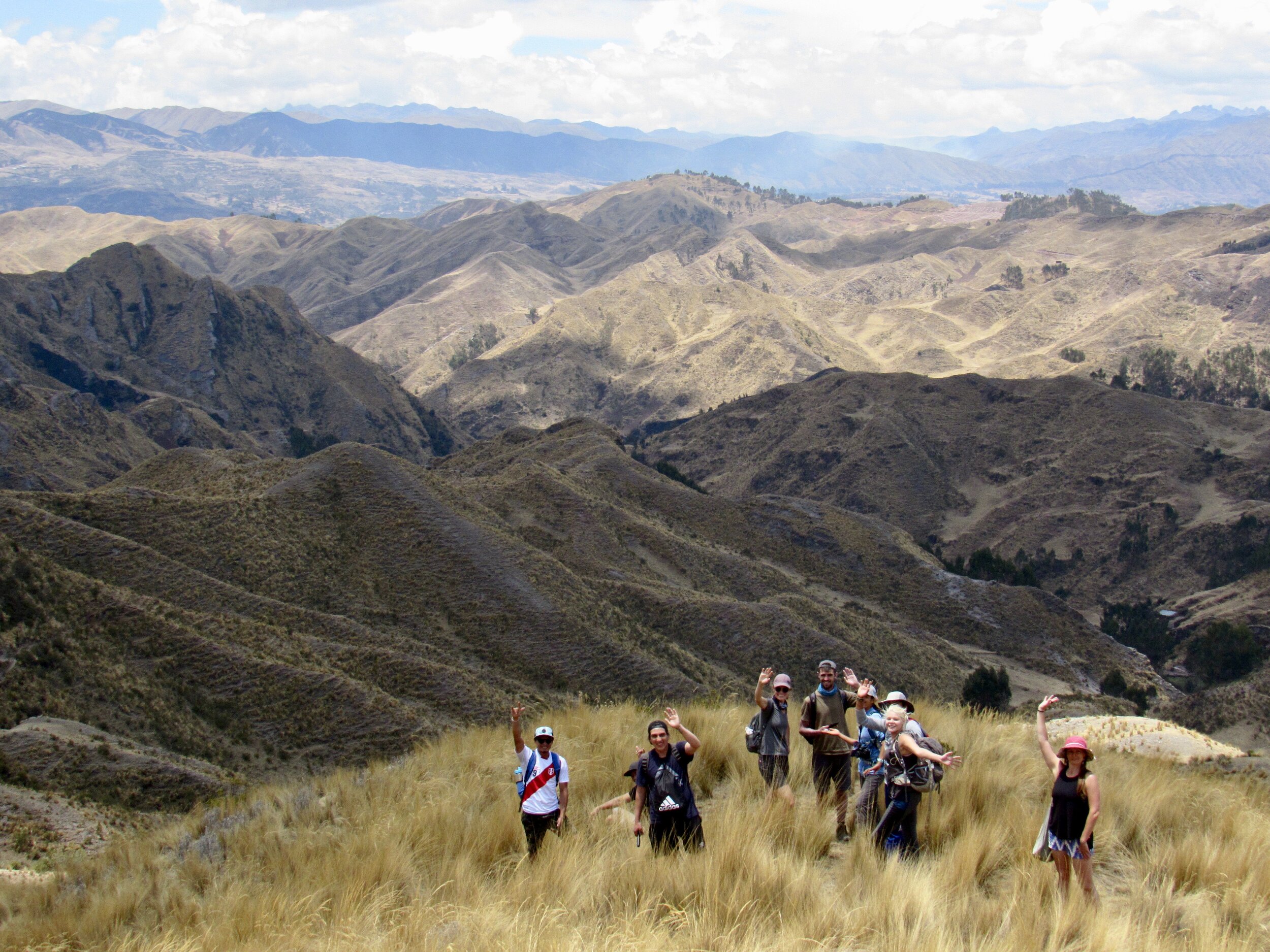
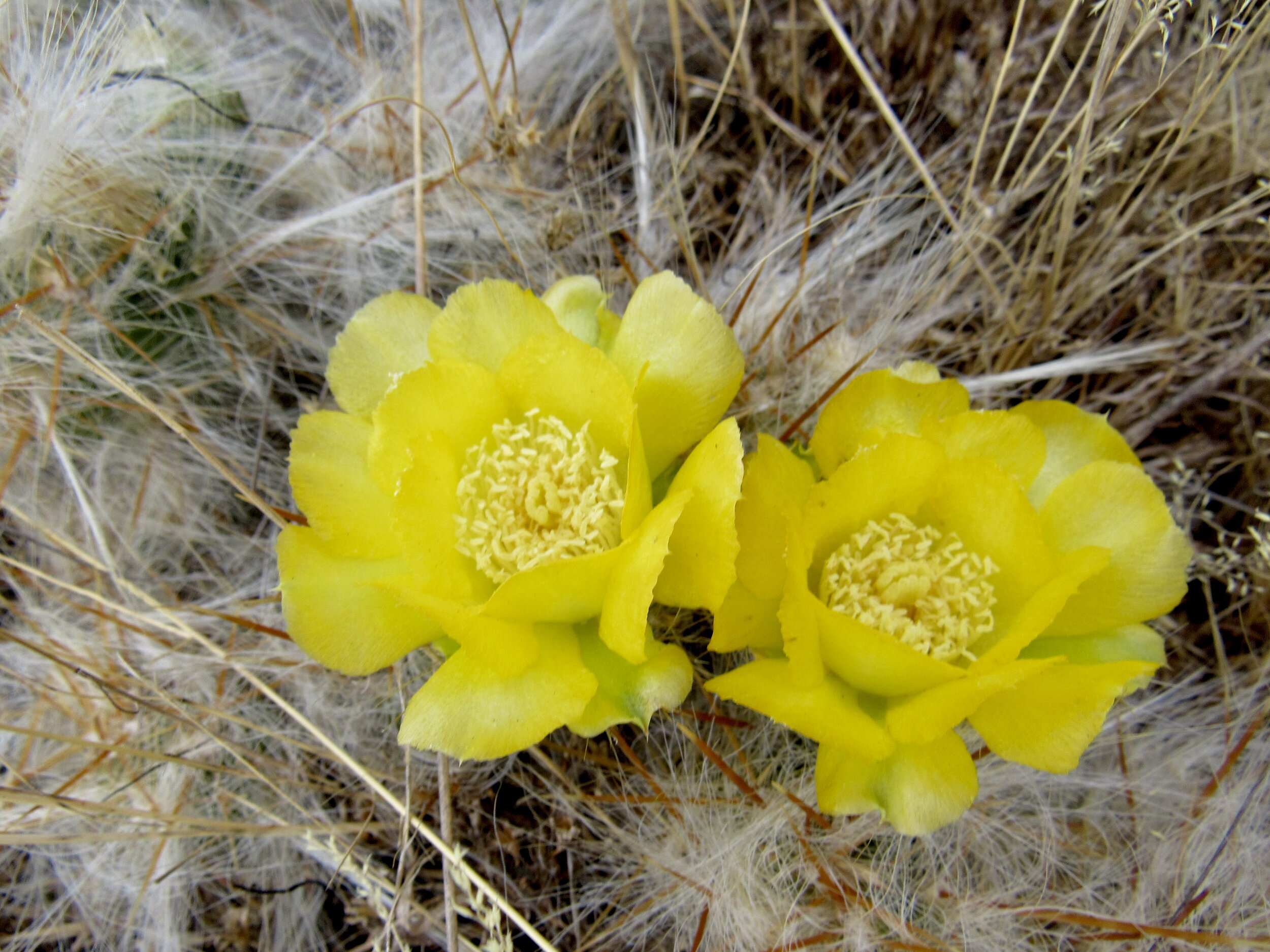
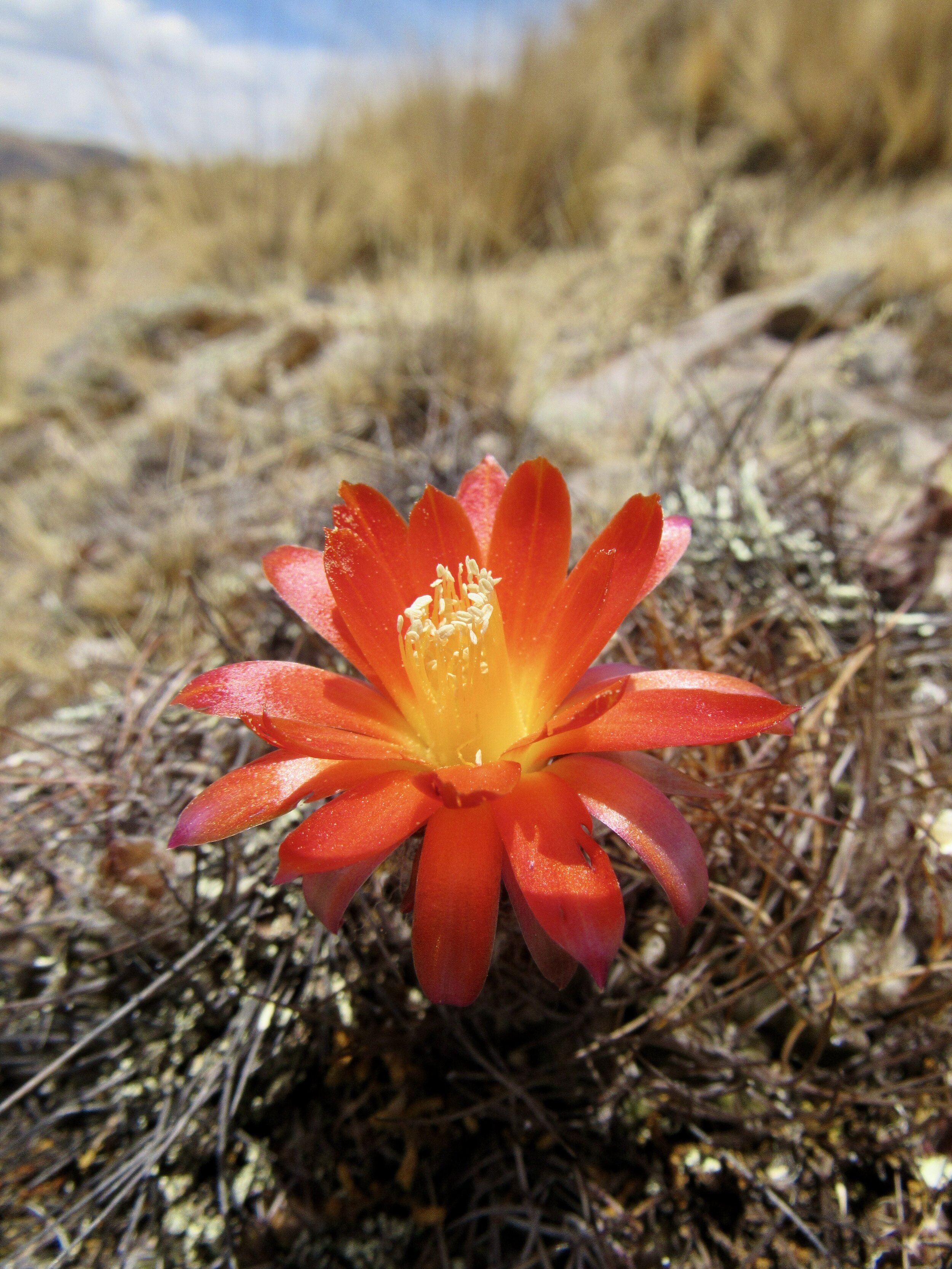
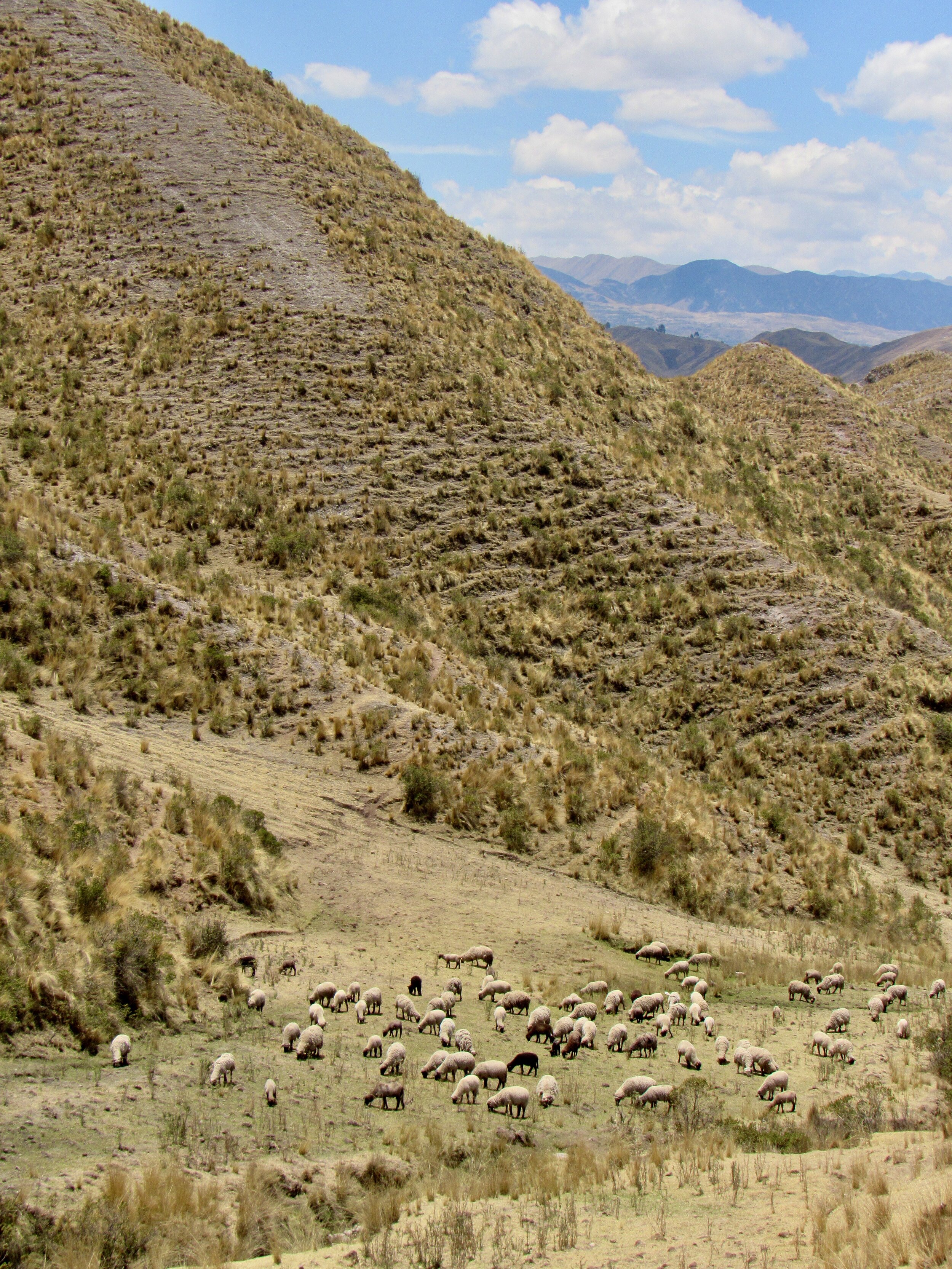
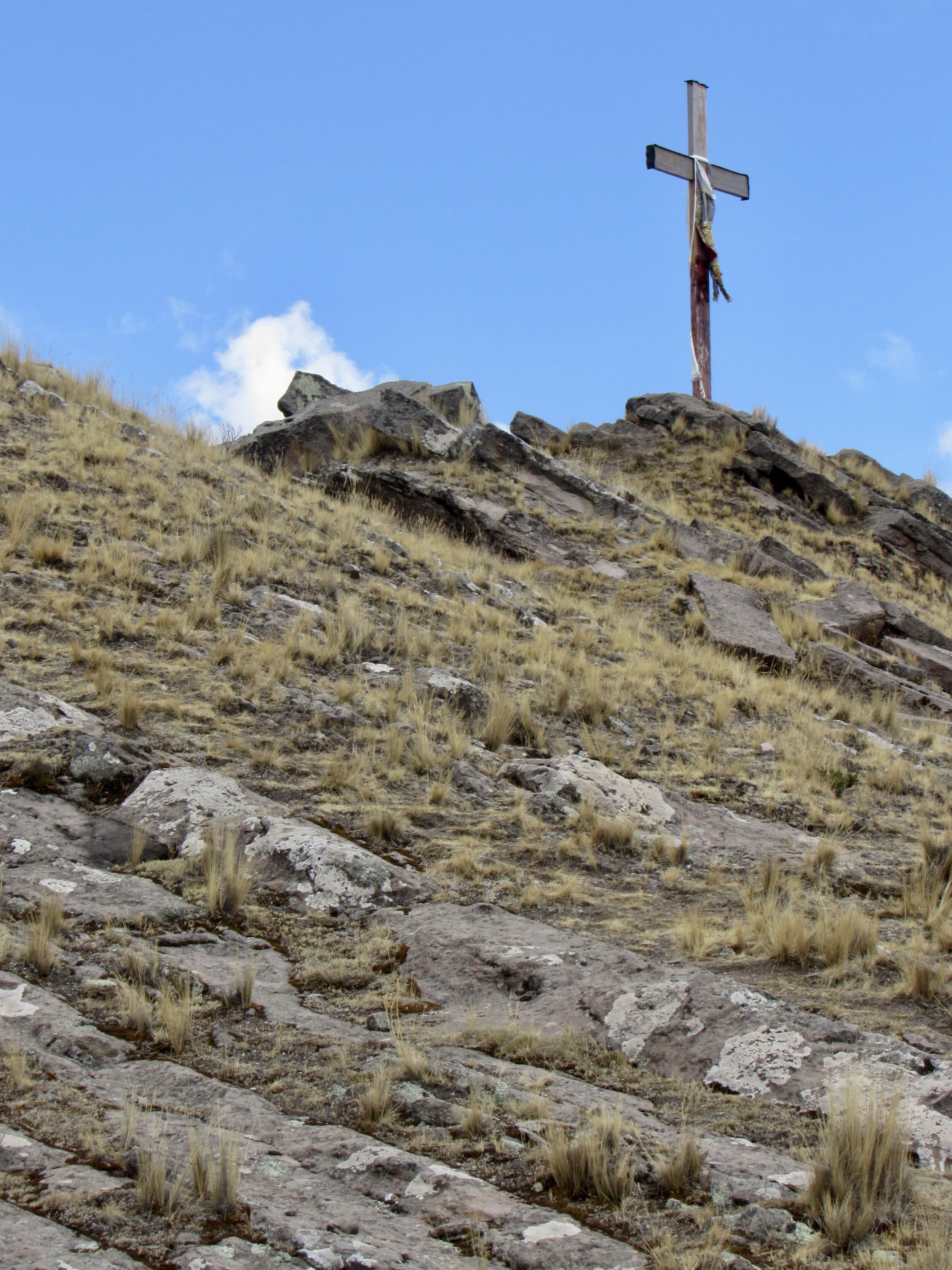
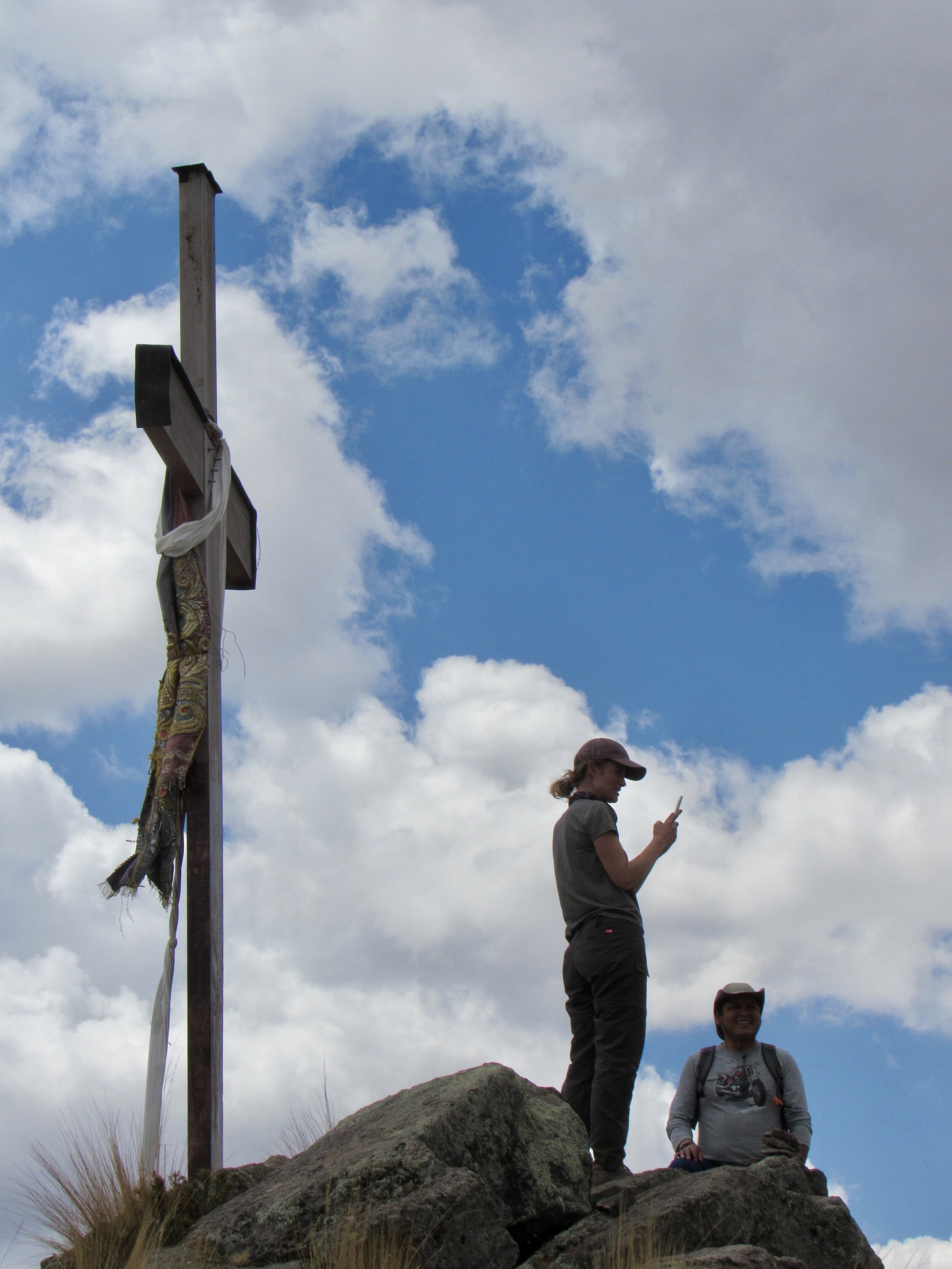
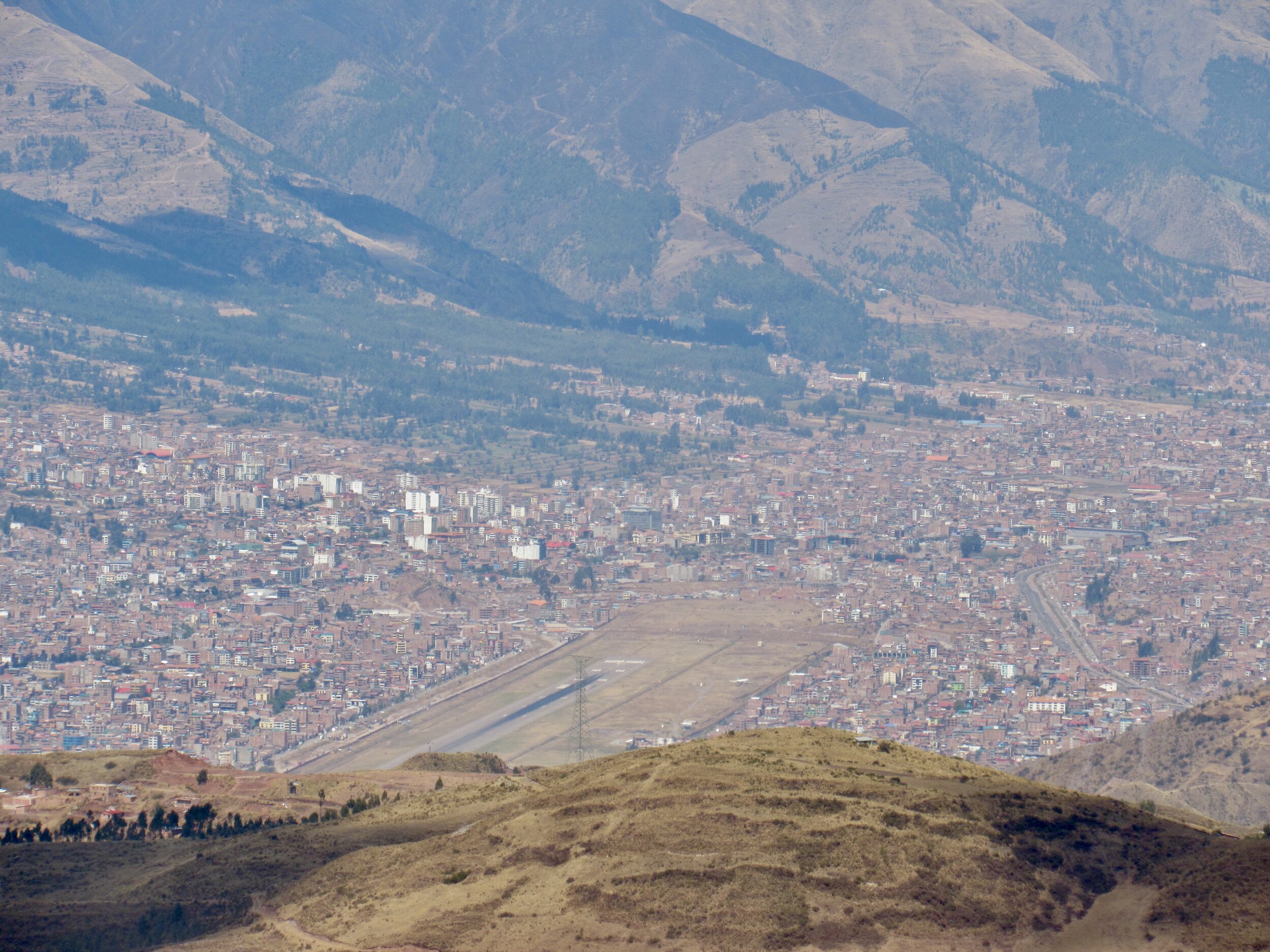
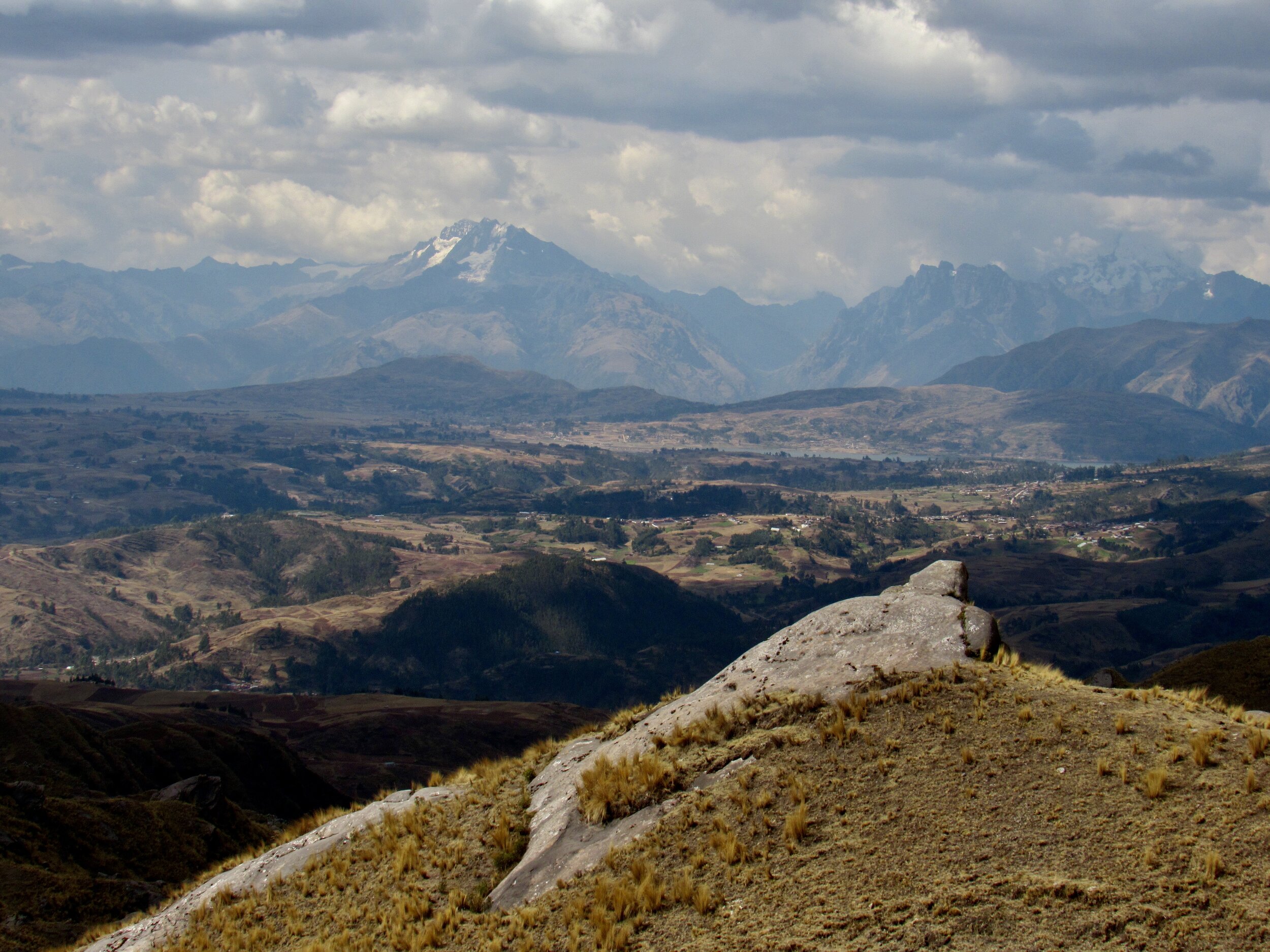
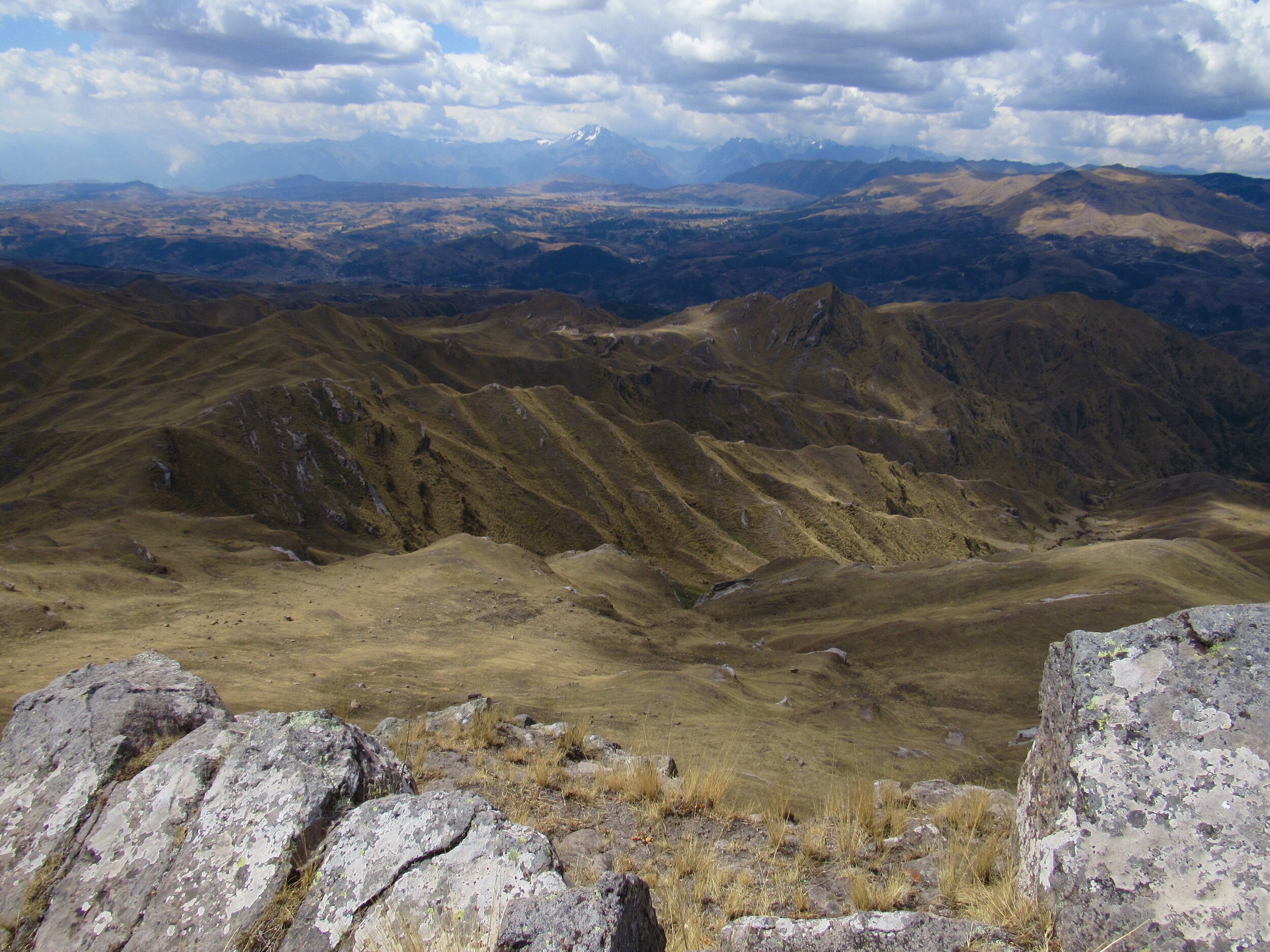
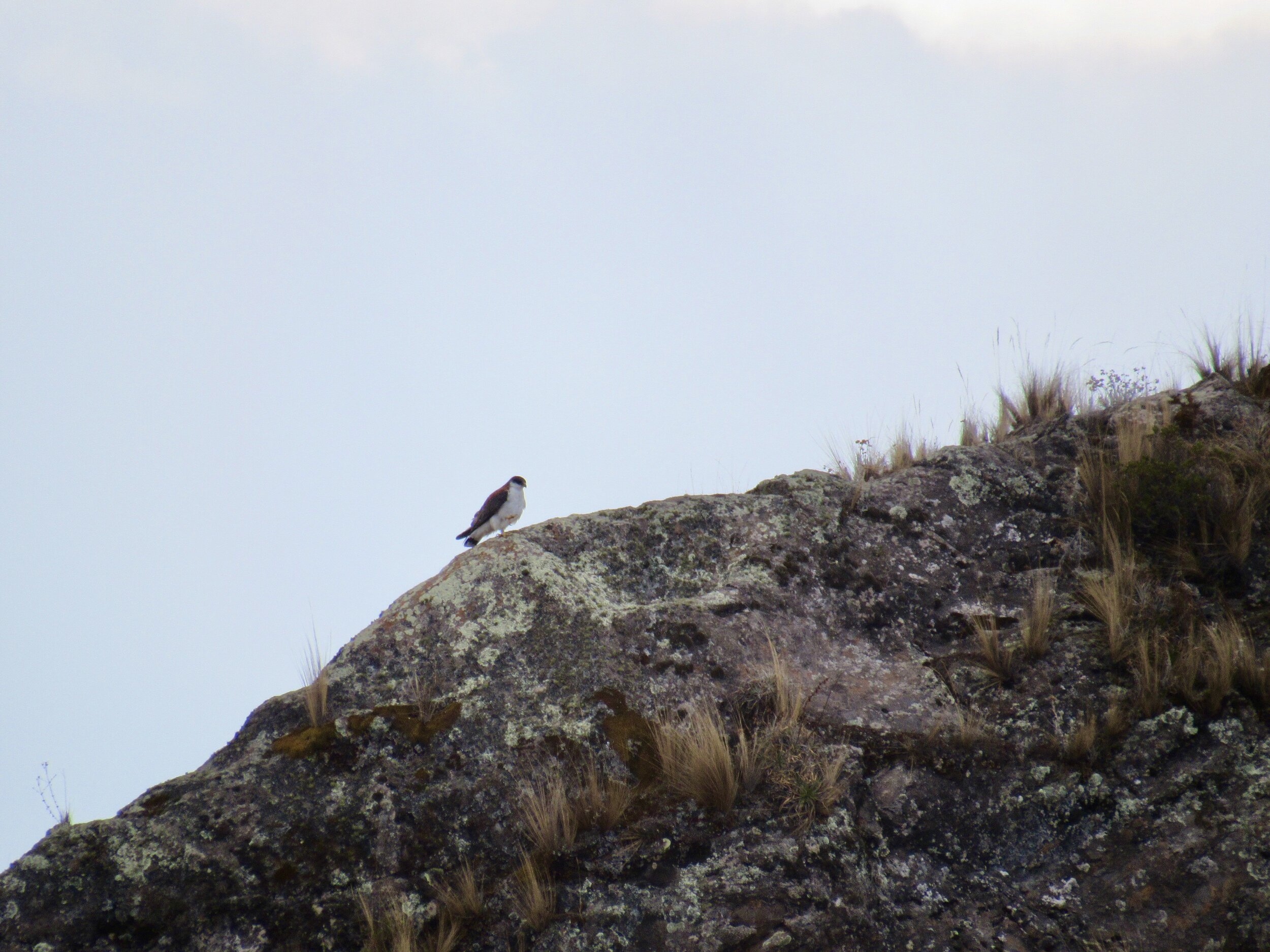
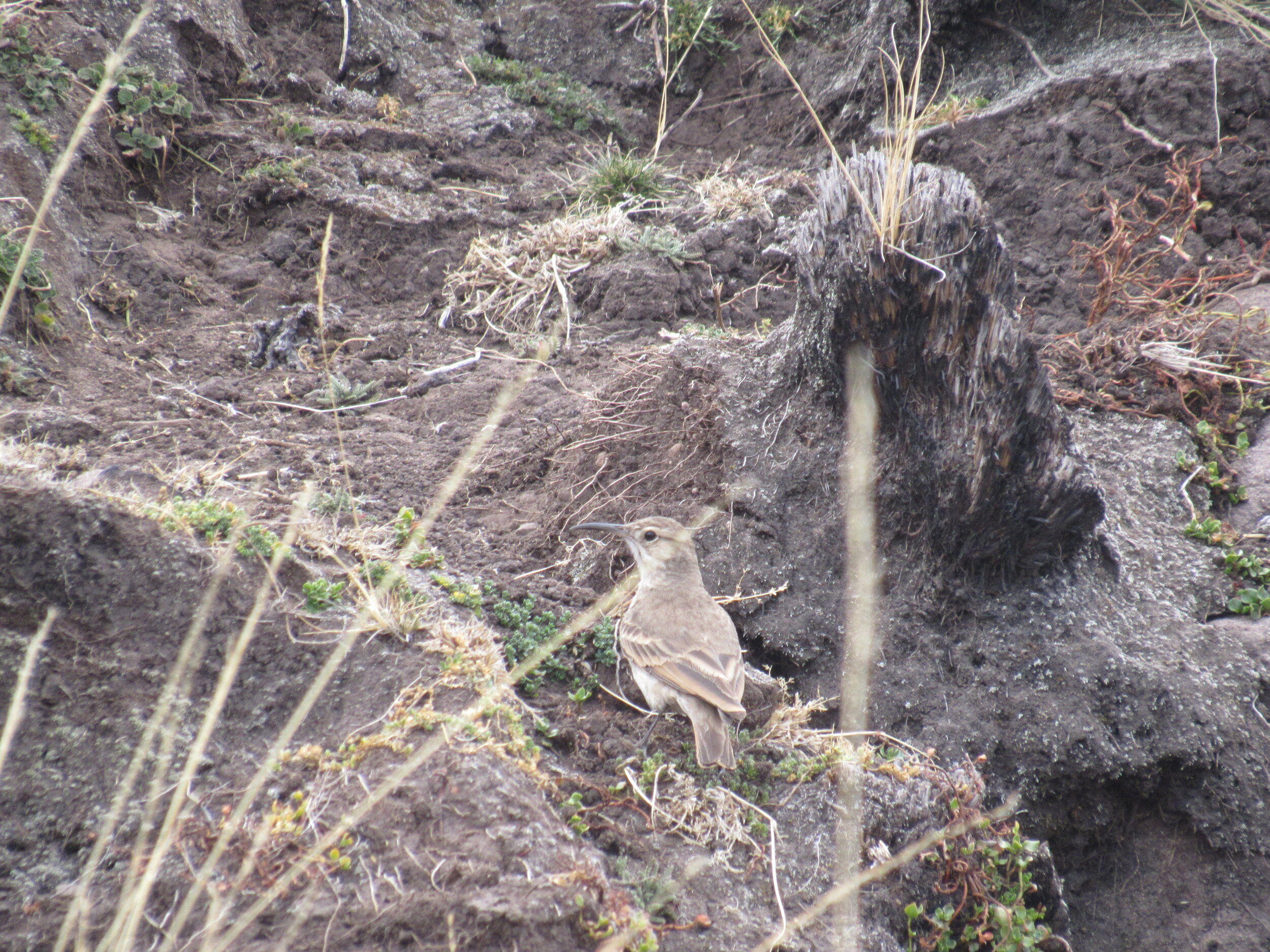
Saturday, 10 October, 2020
Today I went on a hike to the peak of Mama Simona with a group of friends. There were twelve of us in total and we started out the morning with some transportation challenges. There are busses that go near the trailhead, on the north side of Cusco. However, busses are still running at half capacity. Every other seat is marked with a giant red X and no standing is allowed. It didn’t take us long to realize that there was no way the group was going to be able to get in the same bus. Most busses only have room for a total of twenty people.
Auqui negotiated taxis for us to get to the Tica Tica neighborhood, on the edge of town. From here we had to find a van who would take us up a dirt road for about half an hour, to where the trailhead actually starts. We got most of the way there, but the driver refused to actually take us to the end of the road, where the trail starts at Kiswarcancha. He said that the road was becoming too rough for his Sprinter and that we would have to walk.
From where we were left, it would have taken way too long to walk to the end of the road, then up the trail we wanted to the Mama Simona peak. I was disappointed, since from Kiswarcancha to the peak is a section of the original Inca Trail. So, we decided to make a shortcut, pretty much going straight up, bushwacking.
The first half hour, we were walking around fields and past rural homes. None of them had access to electricity and I didn’t see any wells either. A significant percentage of Peruvians still live like this: about two million families, didn’t have electricity in 2019. The next two and a half hours we were walking up grassy hills, parts of which showed signs of having been burned last year. I was happy to see that a large section of the burned area had been planted with tiny pine trees. They were little more than sticks, but the rainy season is coming soon and I hope they will be able to grow significantly before the dry season starts again next May.
Most of the way to the top, we passed a group of six people, dressed in very traditional Quechua outfits. These outfits have changed little since Inca times and they looked like they had come from the past. Auqui went over to speak with them, in Quechua. They said that the younger woman with them had been trying to get pregnant for years and they were going up to the top of Mama Simona to ask the Pachamama to help her. They carried several figures of young children or babies and also things like coca leaves to do a traditional Pachamama ceremony up at the peak. Usually, offerings would be buried near the ceremony site, but the rocky peak is not a place you could bury anything. Instead, they brought dried sticks and some firewood, to burn their offerings.
I hoped that they would be very careful with the fire, since the whole way up we were confronted by half of the sky full of smoke. At least the top of the peak is almost entirely stone and fires usually burn up a hillside, making any fire on the top unlikely to burn downwards. There were several active fires that we could see from the top and although the wind was blowing the smoke away from us, much of the valley was very smokey and I couldn’t get clear photos of the glacial peaks of the Urubamba mountain range.
The way down was much longer, but the first half was an actual path and the second half was a newly cut dirt road. The population of the Cusco region has been growing rapidly and though the pandemic is sure to slow that down, there are new roads all over. There are also more homes being built higher up in the hills, which unfortunately, create more potential places for fires to start. There are no natural, lightning caused fires in the Cusco region. We only get lightening during the storms of the rainy season, and only during the biggest, most torrential downpours. There are no storms in the dry season, so all fires are caused by people.
The trail back down ends in Poroy, which is the town on the edge of Cusco, on the road leading to Urubamba and Ollantaytambo, in the Sacred Valley. Once we got down to the main road, it was easy to get a bus or taxi back to Cusco. Overall, we hiked about ten miles today and my phone recorded our elevation gain as equivalent to 128 floors of stairs. I got home exhausted and happy.
